Samsung Q80D is a very versatile television. It is certainly a device that can easily adapt to the needs of both gamers and those looking for equipment for everyday viewing. When it comes to the former – that is, gamers – the support for HDMI 2.1, 120 Hz refresh rate, and low input lag make playing on a console or PC pure pleasure. Additionally, the Game Bar feature allows quick changes to settings without the hassle of leaving the game – a small thing, but it makes a difference. It's also worth mentioning the fantastic feature of an efficiently working motion smoother that operates well in games. We get the impression that playing on such a television adds us a few FPS, which translates to an advantage in the game. During everyday use, the Q80D also performs very well. The Tizen system offers access to popular applications like Netflix, Prime Video, and Disney+, so nothing is lacking here. The high brightness of the screen ensures that the television performs excellently even in well-lit rooms. A nice and interesting addition is the solar remote, which not only does not require battery replacement but also allows you to control other devices (e.g., set-top boxes, consoles, soundbars). When it comes to picture quality, the Q80D has a lot to offer. Although it lacks Dolby Vision support, after calibration, the colours look great, and the contrast and black level thanks to FALD (full-array local dimming) have made a huge impression on us, especially considering the television segment. With a VA panel enhanced with quantum dots (QLED), the colours on the Q80D can look truly splendid. Watching movies or series in the evening is a real pleasure – particularly if we care about good detail. However, there are little things that might be bothersome. The lack of a recording feature is certainly a limitation, although it may not be a problem for everyone. Another obvious issue will be its viewing angles. These are typical results for this type of panel, so one must reckon that at the expense of great blacks, the Q80D simply performs average when viewed from the side. Nevertheless, Samsung Q80D is an excellent television that works well in any situation. It offers outstanding picture quality, many useful features, and solid build quality for its price range. A few minor shortcomings do not take away from its charm, as overall it is a model that will comfortably meet the expectations of most users – both those who game on a console and those who simply enjoy evening screenings with good image quality.
- Matching (Score)
- Our verdict
- TV appearance
- Where to buy
- Contrast and black detail
- HDR effect quality
- Factory color reproduction
- Color reproduction after calibration
- Smoothness of tonal transitions
- Image scaling and smoothness of tonal transitions
- Blur and motion smoothness
- Console compatibility and gaming features
- Input lag
- Compatibility with PC
- Viewing angles
- TV efficiency during daytime
- Details about the matrix
- TV features
- Apps
- Playing files from USB
- Sound
Samsung QLED Q80D vs Samsung Neo QLED QN70F / QN74F / QN77F
Direct compare
Check the best price offer:
Samsung Neo QLED QN70F / QN74F / QN77FQ80D
QN70F / QN74F / QN77F

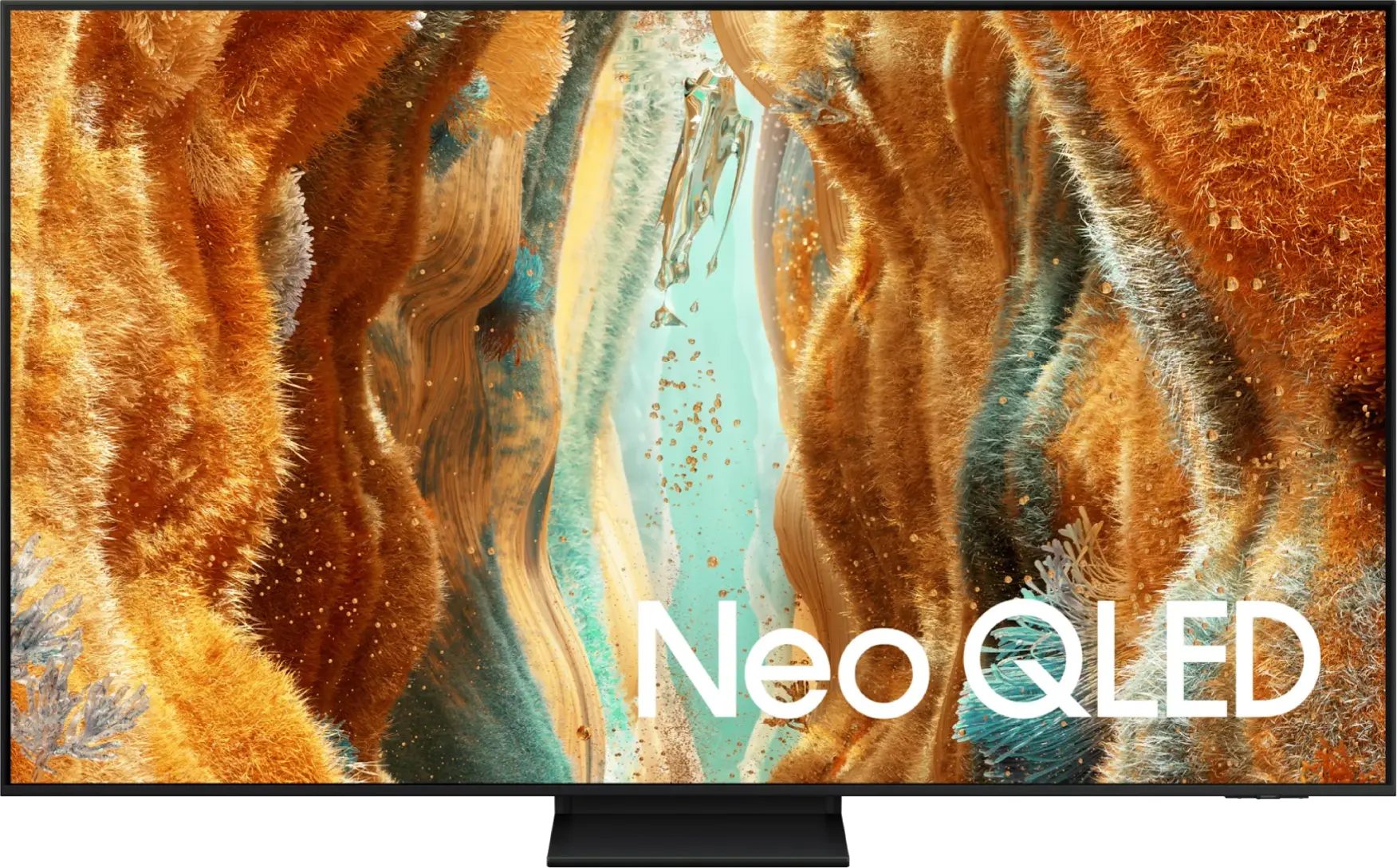
Panel type: LCD VA
Resolution: 3840x2160
System: Tizen
Model year: 2024
Complete the survey to find out the result

Panel type: LCD VA
Resolution: 3840x2160
System: Tizen
Model year: 2025
Complete the survey to find out the result

Overall rating
7.1
7.0
Movies and series in UHD quality
6.8
6.5
Classic TV, YouTube
6.7
6.5
Sports broadcasts (TV and apps)
6.6
6.7
Gaming on console
8.7
8.5
TV as a computer monitor
7.6
8.2
Watching in bright light
6.0
6.3
Utility functions
7.7
7.2
Apps
8.7
8.7
Sound quality
6.6
6.4
Complete the survey to find out what fits your preferences
Advantages
Great choice for gamers - lots of features, low input lag, 120Hz
High brightness of the panel - good performance during the day
Good black levels and contrast - VA panel with local dimming
Excellent tonal transitions
Advanced smart system "Tizen"
Pleasant sound from the built-in speakers
Nice black and contrast
Above average panel brightness
High refresh rate of 144Hz
Many features for gamers: ALLM, VRR, Game Bar etc.
Low input lag
4 HDMI 2.1 ports
Advanced and smooth Tizen operating system
Super slim design
Disadvantages
Average viewing angles
No recording function
No DTS (may hinder connection to home cinema)
No USB recording feature
No DTS format
Issues with the HGIG function (for gamers)
Symbolic local dimming (Is this really MINI-LED?)
Our verdict
Samsung QN70F is quite a decent television from the mid-range segment. Its strongest point is definitely the smoothness of the picture – thanks to the 144 Hz panel, low input lag, and a plethora of gaming features, we have here a recipe for an almost perfect gaming screen. It also performs well for sports fans – the picture is fast, clear, and there are no tears. In terms of picture quality – it’s really not bad at all. The VA panel provides good blacks, brightness is above average, and colours look great after calibration. Samsung advertises the QN70F as Neo QLED, meaning Mini LED, and in a sense, you can view it that way – but only partially. The backlighting is edge-lit, so it is far from being a full-fledged Mini LED with local dimming. It’s a shame, as marketing has its influence, and the user may feel somewhat misled. Additionally, there are minor shortcomings – no USB recording, no DTS support. But despite everything, the QN70F leaves a really good impression. It may not be a “true” Mini LED, but for its price, it is a solid piece of television – especially for gamers and those who enjoy fast, dynamic content.
TV appearance




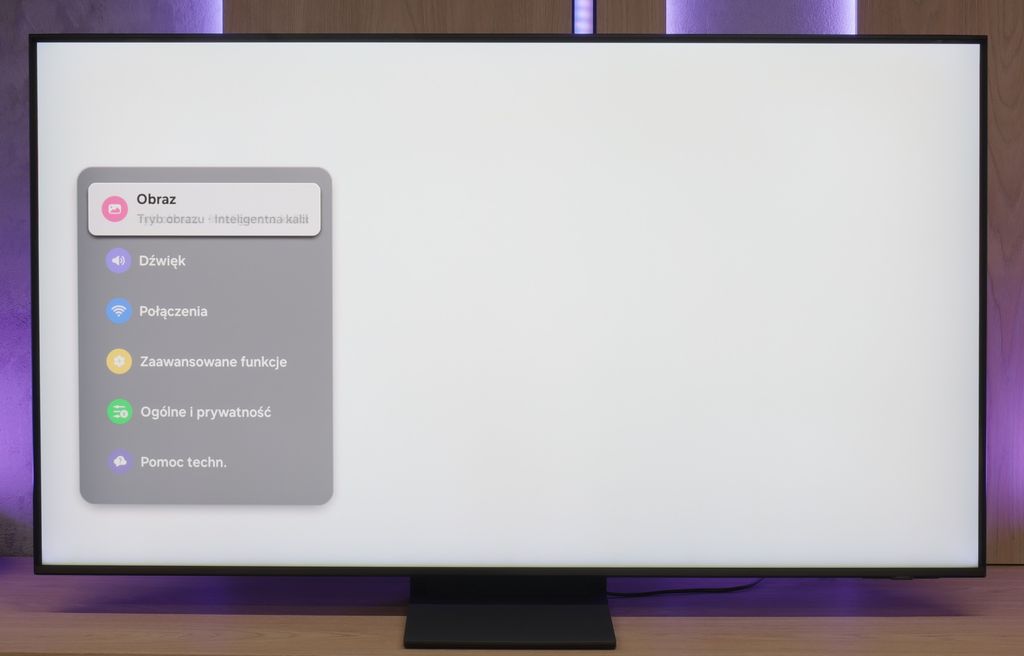
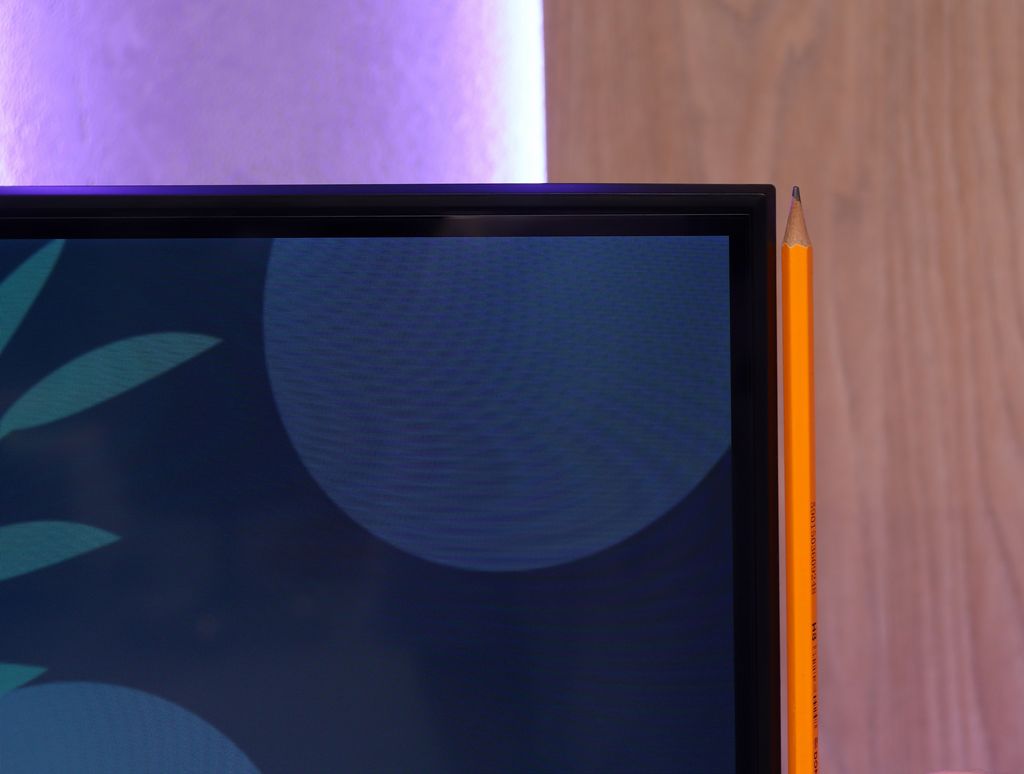
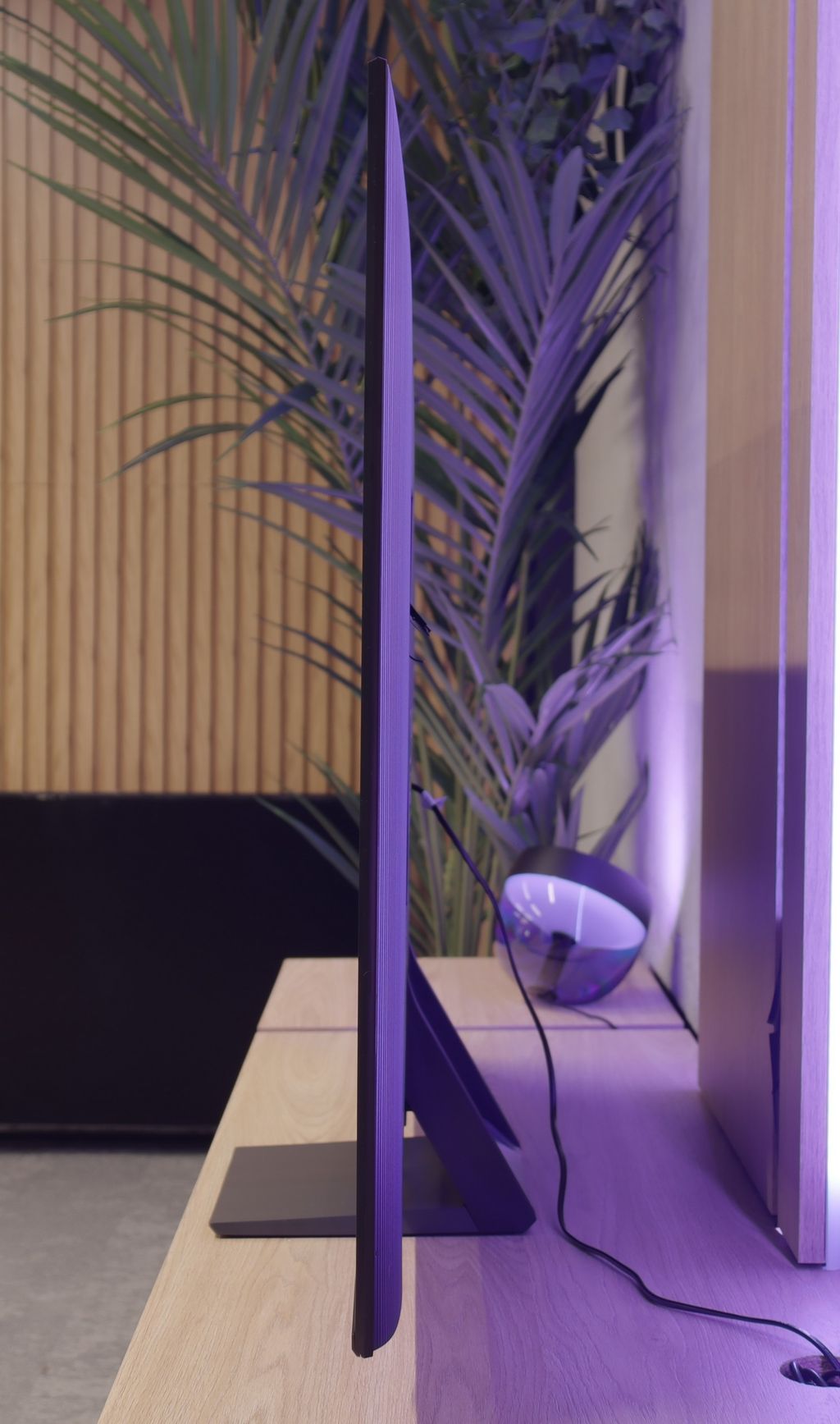
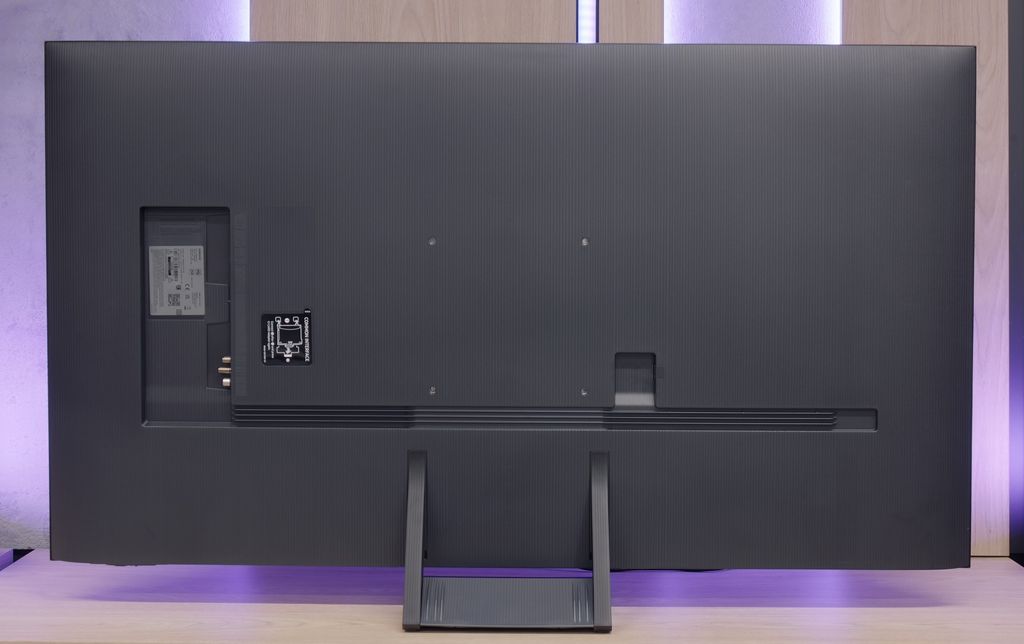
Where to buy
Contrast and black detail
6.7/10
6.2/10
Local dimming function: Yes, number of zones: 100 (10 x 10)
Local dimming function: Yes, number of zones: 20 (1 x 20)
Contrast:

Result
37,350:1

Result
8,850:1

Result
20,350:1

Result
4,300:1

Result
3,800:1

Result
9,200:1

Result
7,000:1

Result
5,350:1

Result
5,700:1

Result
5,300:1
Halo effect and black detail visibility:

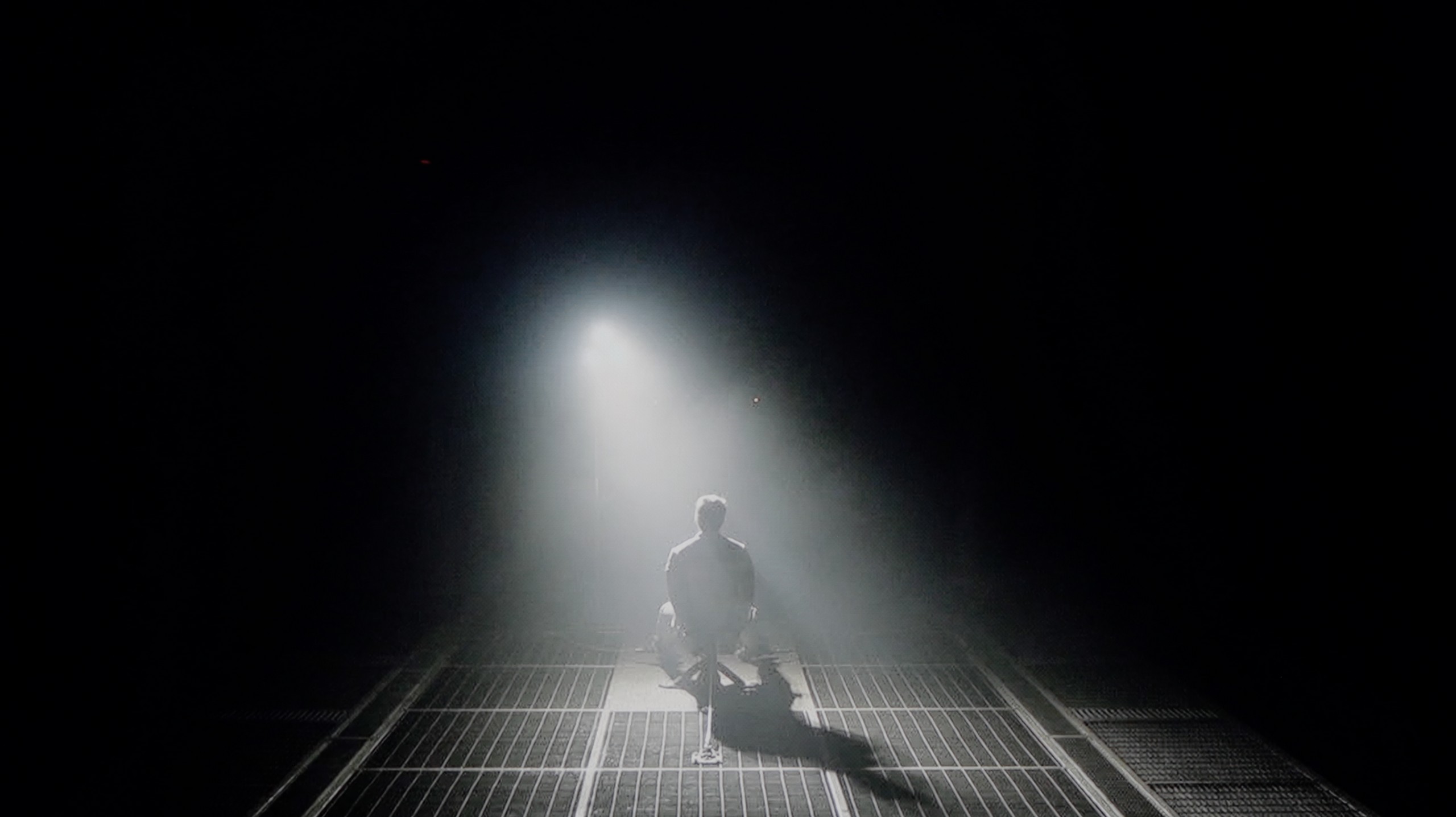
The Samsung Q80D television is equipped with a VA panel, which immediately affects the difference in contrast and black reproduction compared to IPS panels. VA panels offer significantly better contrast and deeper blacks, while IPS panels feature better viewing angles but worse contrast. In the case of the 55" model, the television has 100 local dimming zones, and it's worth noting that this number may vary depending on the screen size. Thanks to local dimming, blacks appear well, but it's important to mention that the algorithm of this technology combined with the limited number of zones can sometimes "go crazy". Bright objects may be dimmed to achieve better blacks. During a test scene from the film Oblivion, the lights blended into a single spot, regardless of the dimming settings, highlighting the limitations of this technology. In the film Sicario 2, large dimming zones were particularly noticeable, for example, with the small lights of a helicopter, indicating how large the areas controlled by a single dimming zone are. Despite these imperfections, local dimming technology still offers significantly better image quality than televisions without this feature or with edge lighting. With the ability to completely turn off individual zones, the television can provide a noticeable boost in brightness in selected areas, which can give the image a cinematic effect, especially in dark rooms.
The QN70F is equipped with a VA panel that offers a high native contrast – this is already a good starting point for black levels, especially during evening viewing. However, its capabilities do not theoretically end there. The television is branded as Neo QLED, which indicates the presence of Mini LED technology and a local dimming system. And indeed – the QN70F has this function. The problem is that we are not talking about classic local dimming with LEDs positioned directly behind the panel. Instead, edge lighting has been implemented with an overall dimming mechanism known as global dimming. The effect of this is that instead of selective brightness control in individual zones, the entire screen is slightly dimmed when a dark scene appears. In practice, this means that the contrast is average compared to Mini LED models that offer true local dimming. The black levels are not bad – thanks to the VA panel itself – but one cannot speak of precise light control like that provided by advanced systems with multiple zones. This raises the question: is the QN70F series really a Mini LED television, or just a marketing variation on the Q70 series? Looking at the technical aspects – it is hard to consider this model a full-fledged representative of this technology. But in everyday use, the black levels appear decent and for many people may be fully satisfactory.
HDR effect quality
5.8/10
5.6/10
Luminance measurements in HDR:

Result
927 nit

Result
423 nit

Result
612 nit

Result
242 nit

Result
856 nit

Result
619 nit

Result
449 nit

Result
500 nit

Result
422 nit

Result
483 nit
Scene from the movie “Pan” (about 2800 nits)


Scene from the movie “Billy Lynn” (about 1100 nits)


Static HDR10


Dynamic: HDR10+
Dynamic: HDR10+


HDR luminance chart:
Samsung Neo QLED QN70F / QN74F / QN77F
Luminancja HDR
Luminance of RGB colors
Samsung QLED Q80D
Luminancja HDR
Luminance of RGB colors
In the context of HDR, the Samsung Q80D television achieves very positive brightness results in the tested film scenes, where the frame is filled with light, reaching values from 600 to 900 nits, allowing the user to experience a great juiciness of the image. Such results allow the user to feel the difference between HDR and SDR quality. Unfortunately, problems arise in situations where small light effects occur against a dark background. In such cases (e.g. test pattern 4 from the film Sicario 2), a noticeable drop in brightness can be observed, caused by the large sizes of the dimming zones used here. This limitation, combined with the dimming algorithm, affects how the television handles small bright elements against a dark background. At that point, we may perceive an unwanted lack of brightness, and the HDR effect resembles that of SDR.
The QN70F is a television that can pleasantly surprise when it comes to brightness. In ideal testing conditions, it reaches up to 800 nits, which – for this price range – is a really solid figure. Of course, this result comes from measurement charts, so we decided to check how it performs in practice, with real films. Here, the television somewhat tempers its capabilities. In most tested scenes – for example, in "The Meg" – the actual HDR brightness hovered around 500 nits. This is still a decent result, allowing for enjoyment of HDR effects, although it is far from perfect. On the other hand, we have a QLED screen with a layer of quantum dots, which means very good colour reproduction capabilities. The colours are vibrant and saturated. The QN70F covers about 94% of the DCI-P3 colour space, and in the wider BT.2020 palette, it exceeds 75%, so in this respect, there is nothing to be ashamed of.
Factory color reproduction
6.8/10
7/10


Factory Mode
After calibration


Factory Mode
After calibration
In "Filmmaker" mode, which is the best choice out of the box, the Samsung Q80D TV shows solid colour reproduction. For SDR content, a visible drop at the beginning of the gamma curve suggests that details in dark scenes may be less pronounced, impacting the overall viewing experience. Regarding white balance in SDR content, while it is generally accurate, significant drops in blue colour when screen coverage exceeds 70% can result in less natural hues in bright and dark scenes. Users may notice that some blue elements in the image may appear less intense, and the overall colour will have a warmer tint.
In contrast, for HDR content, the EOTF curve being above the reference line for most of the time indicates that the TV may struggle with accurately reproducing brightness and details in the brighter areas of the image, which may be disadvantageous for the viewer. It is also worth noting the substantial drop at the beginning of this graph, indicating that the TV has difficulties reproducing brightness in the darker areas of the image, as seen in the contrast and black tests, where several scenes were unable to showcase the full capabilities of the TV's brightness. In terms of its white balance, the initially good results on the graph are promising, but the sharp drop in red colour, which significantly falls down, combined with a large increase in blue colour, may lead to inaccuracies in reproducing certain skin tones and other key colours. This phenomenon may be noticeable to viewers in scenes where colour details are crucial.
We tested the QN70F in its best default picture mode, which is Filmmaker Mode. I must admit that in this particular test unit, the factory settings performed quite well. The image was calm, natural, and despite minor deviations – pleasant to watch. The biggest flaw was a slight dominance of red in the white balance, which caused a slight pinkish hue across the entire scene. However, this was not a glaring defect – rather subtle and only noticeable when directly compared to a properly calibrated screen. A somewhat larger issue arose in the brightness characteristic. The television tends to underestimate the brightness of parts of the image that should be displayed more brightly. As a result, some details can appear slightly muted – not so much lost completely, but not resonating as clearly as they should. Nonetheless, as far as televisions in this category and in these settings are concerned – we consider the result a good starting point for further calibration.
Color reproduction after calibration
8.1/10
8.5/10




The film mode after calibration looks significantly better than the one you can see when taken out of the box. Samsung offers an advanced range of calibration tools in its televisions. Among them are 2- and 20-point greyscale adjustment and CMS (Colour Management System). Both in HDR and SDR mode, the white balance has improved significantly, although there are minor errors at the end of the graph in the case of HDR content. The contrast has also been greatly improved, and the gamma curve responsible for SDR shows better results. However, when it comes to HDR, the EOTF curve in the television seems to be at an ideal level at first glance. Yet, when we delve deeper and enable the EOTF graph while watching films, we may notice that all the lines of the curve are above the reference line. One could even say that the television is "cheating" when playing film materials. Such a situation, where the EOTF curve is above the reference line, makes the screen – although it may seem brighter, which some users may find attractive – lose detail in the darker parts of the image. In practice, this means that in scenes with a lot of shadows or dark elements, the television is unable to accurately render the details that should be visible.
After calibration, the QN70F shows that it can offer a truly high level of colour reproduction. The white balance was nearly perfectly aligned, and the values in the Color Checker test dropped below level 3 – meaning below the threshold at which the average eye can perceive differences. The image looks natural, and the colours are faithfully rendered, without excessive saturation or the coolness known from factory settings. It must be admitted that Samsung provides very extensive calibration options – not only for enthusiasts but also for professionals. The QN70F takes advantage of this potential and, after proper adjustment, can come close to significantly more expensive models in terms of colour accuracy. The only thing that can still be nitpicked is the brightness characteristic. There is still a tendency to lighten the smallest areas of the image – particularly those that should remain darker. However, this is a design feature of this model, not a calibration error. Despite this, the final effect definitely deserves recognition.
Smoothness of tonal transitions
8.8/10
8/10

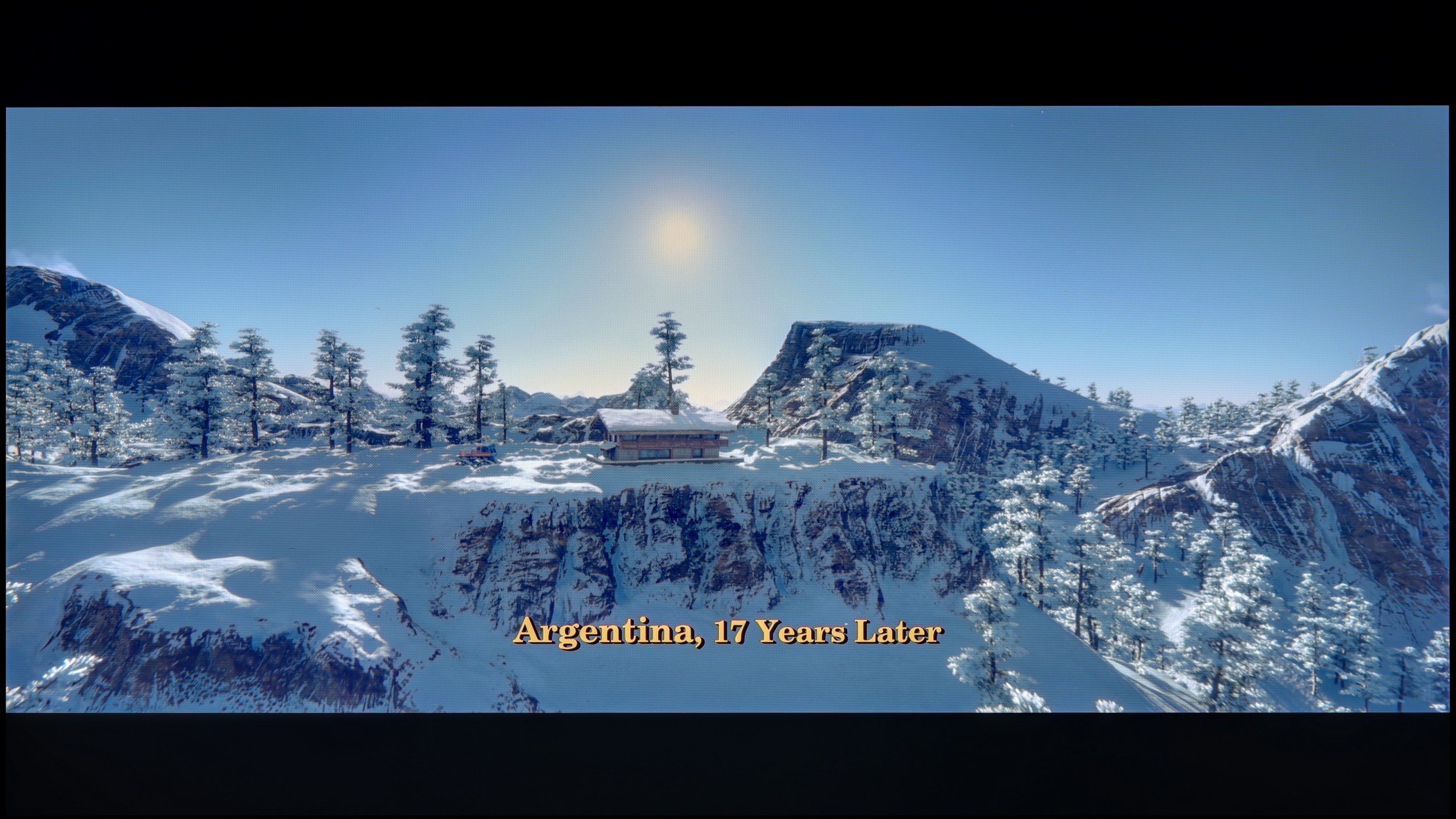










The tonal gradation in the Samsung Q80D television is at an excellent level and can be considered one of its stronger points. Even in the most demanding scenes from the films we tested, it performs exceptionally well. Any potential issues with smoothing transitions in colours are minimal and subtle. The average viewer will most likely not notice them, which translates to an overall positive visual experience in everyday use.
In terms of the fluidity of tonal transitions, the QN70F performs really well. Gradients are smooth, and colours blend into each other without obvious thresholds or banding. Even in more difficult movie scenes – particularly those that are very dark – any possible imperfections are minimal and you really have to make an effort to notice them. In regular viewing, most users should not encounter any issues with colour merging. The image looks clean and coherent, without artificial smoothing or distortions. This is another aspect in which the QN70F pleasantly surprises.
Image scaling and smoothness of tonal transitions
7/10
6.9/10
Smooth transition function

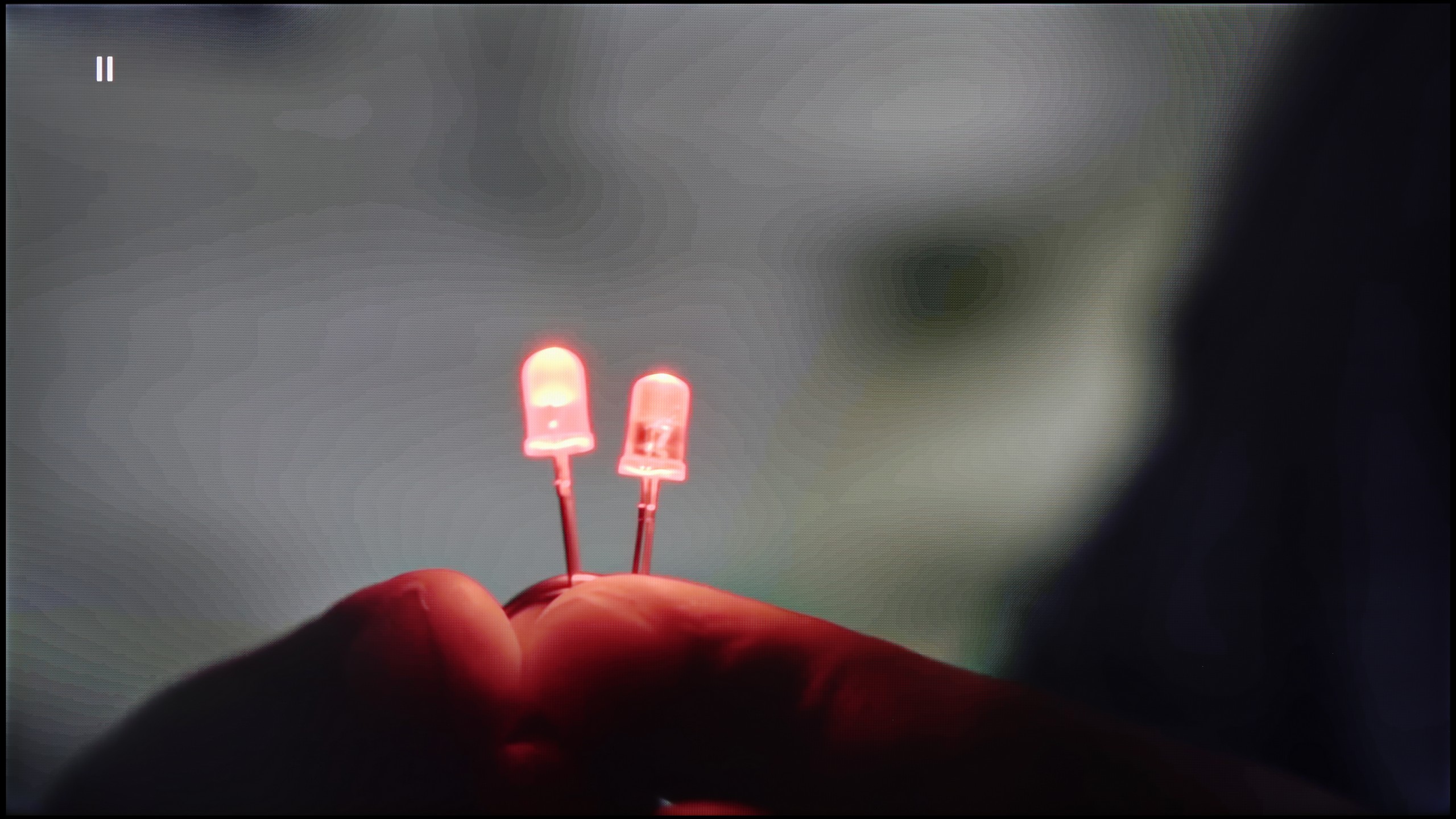
Image without overscan on the SD signal

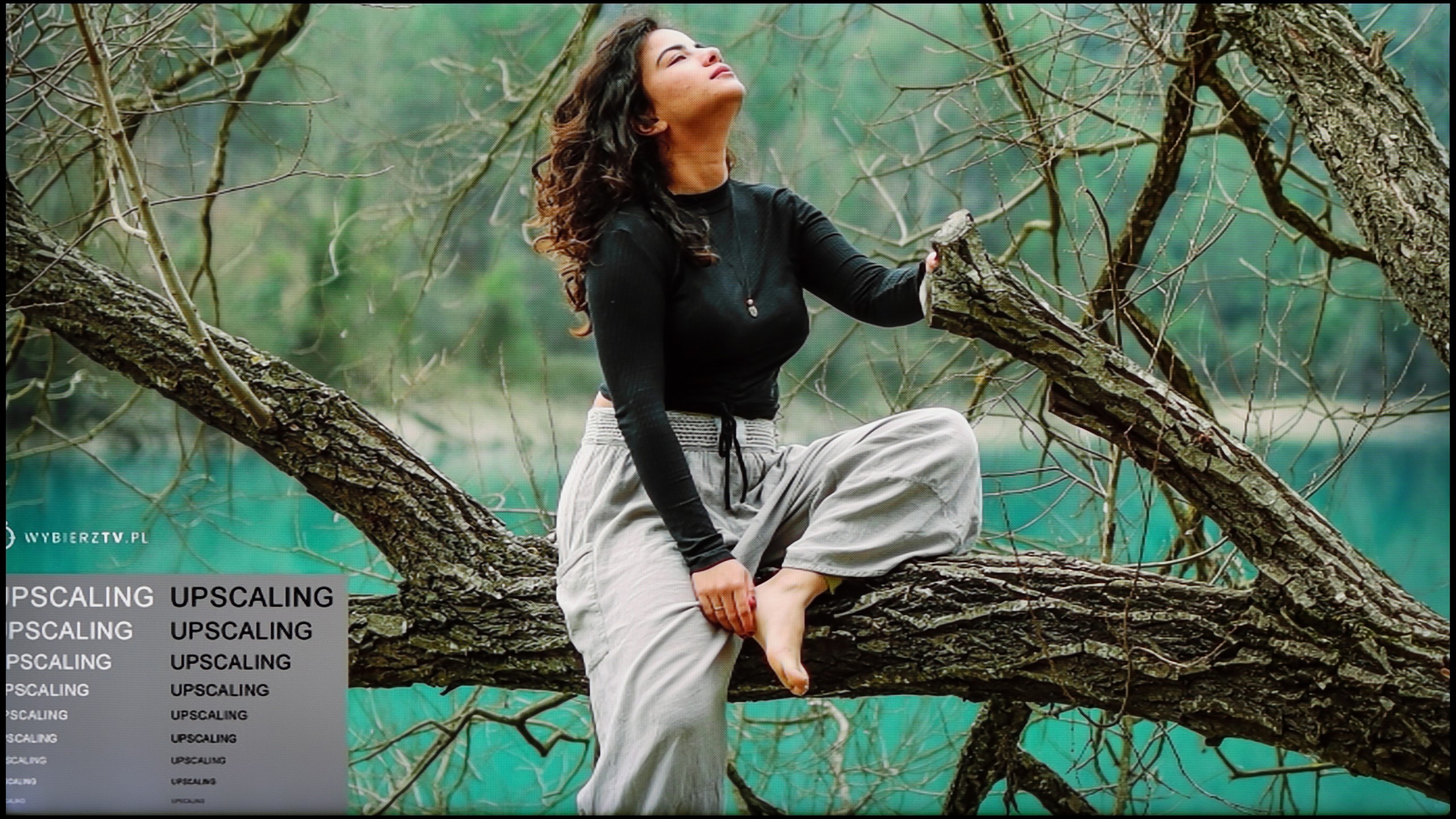
Samsung Q80D performs very well with low-quality materials. The noise reduction works on the principle of gentle grading, making it very effective in smoothing out unwanted image disturbances. Unfortunately, this same effectiveness also causes elements that should not be smoothed, such as film grain, to become blurred. For those who value a pliable, smoothed image more, this can be seen as a significant advantage, especially for lower-quality content.
When it comes to image scaling, Samsung Q80D stands out positively in this aspect, significantly enhancing viewing comfort. The television handles the conversion of lower-resolution materials well, improving their quality and detail. For example, in the attached image with the model, there are no visible artifacts or excessive fraying of branches, which attests to the advanced image processing technology.
Samsung QN70F offers a distortion reduction feature that enhances the smoothness of tonal transitions. In "Standard" mode, it works quite well – it smooths out problematic transitions without significantly interfering with the structure of the image. Film grain is somewhat reduced, but details such as texture and skin structure remain visible. The "High" mode is much more aggressive. The smoothing is stronger, but it comes at the cost of a noticeable loss of detail. Therefore, in practice, we recommend sticking with the "Standard" setting or completely turning this function off. The improvement in gradation may be less spectacular, but the image retains more naturalness.
When it comes to scaling low-quality content, the QN70F performs very well. Tests with lower resolution images were really very good. Despite slight edge ringing, everything looks clean and clear, even if the original content was very poor. It’s just a pity that the television has an issue with overscan, which cannot be completely turned off. As a result, images with very low resolution may be slightly cropped, which is mainly noticeable on subtitles or interfaces.
Blur and motion smoothness
7.3/10
7.5/10

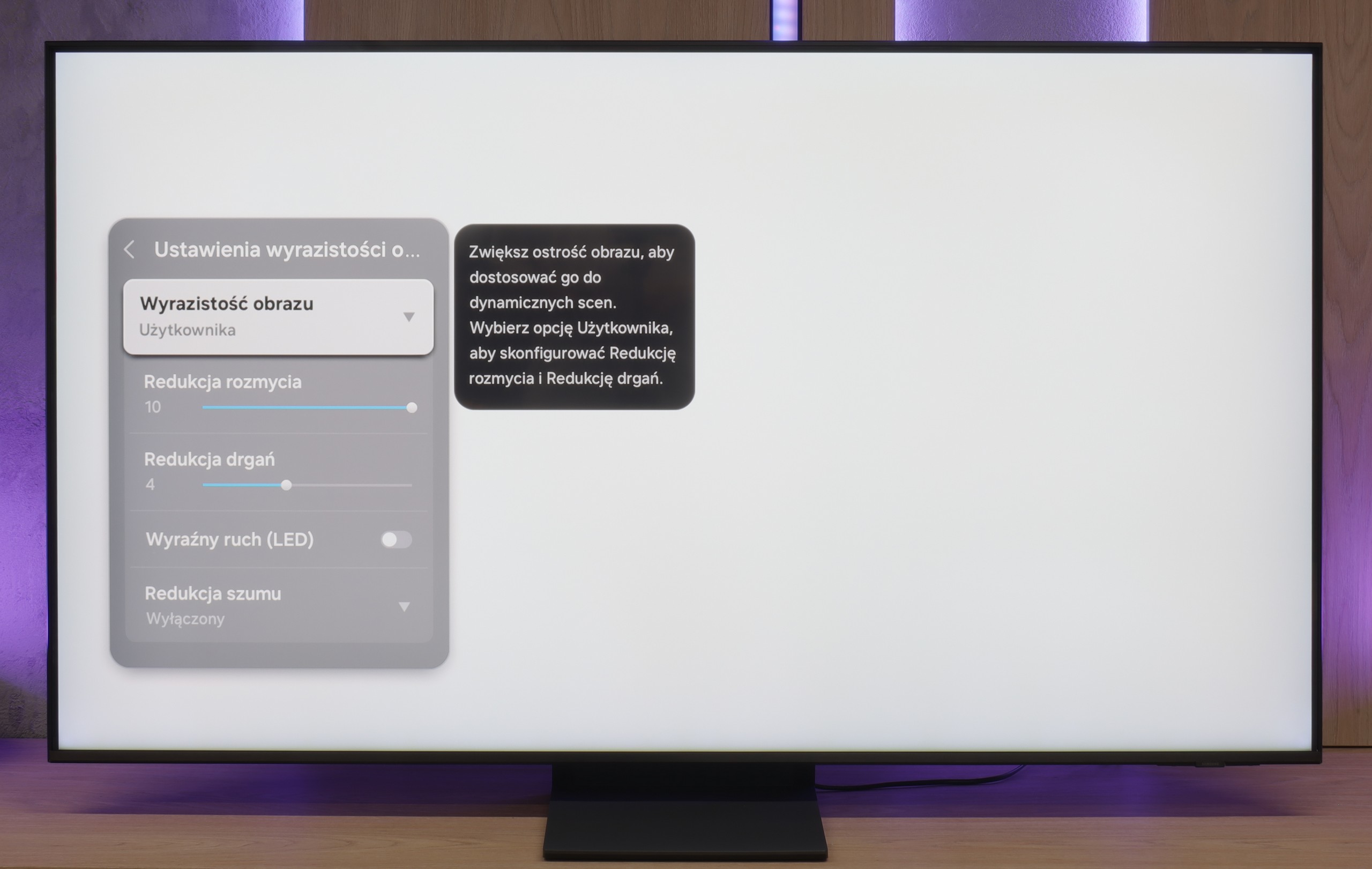
Blur (native resolution, maximum refresh rate):



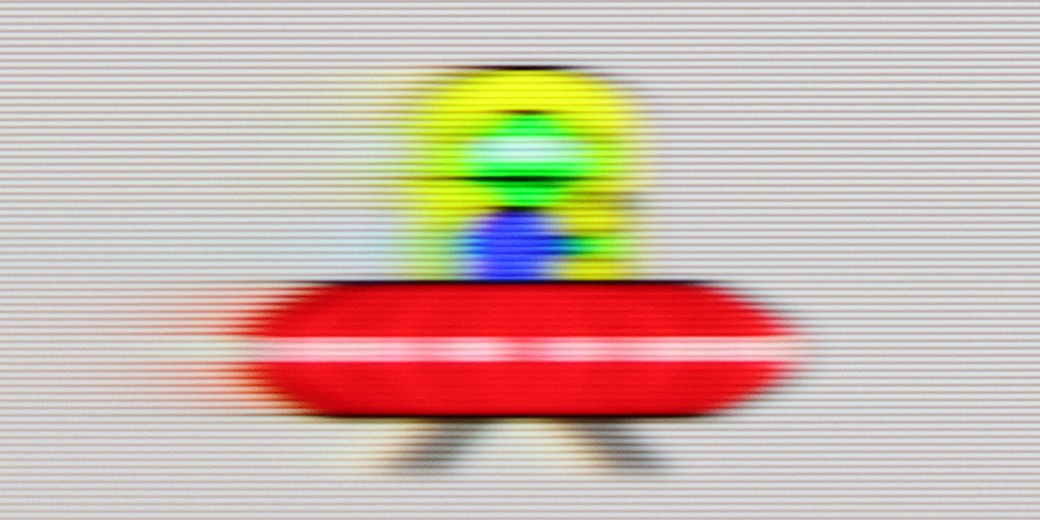
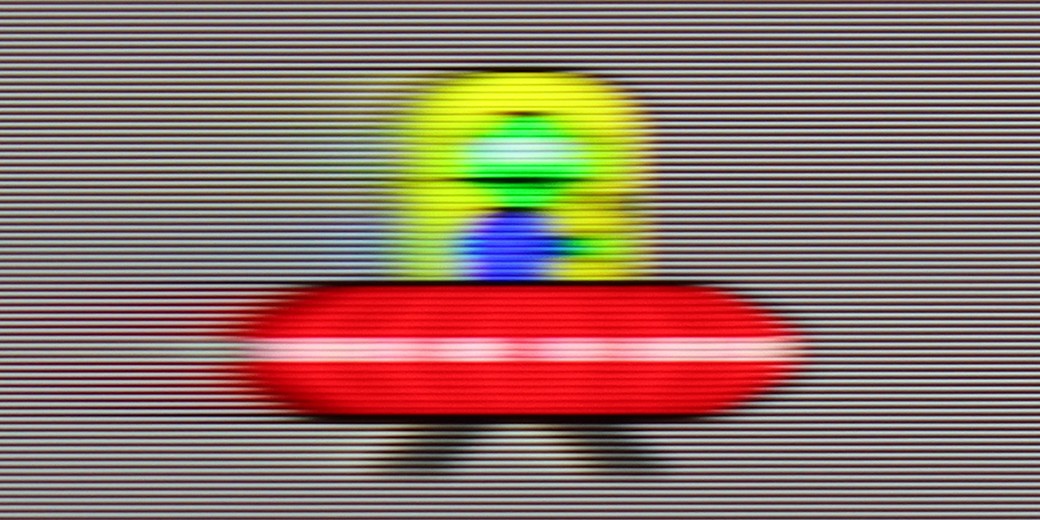
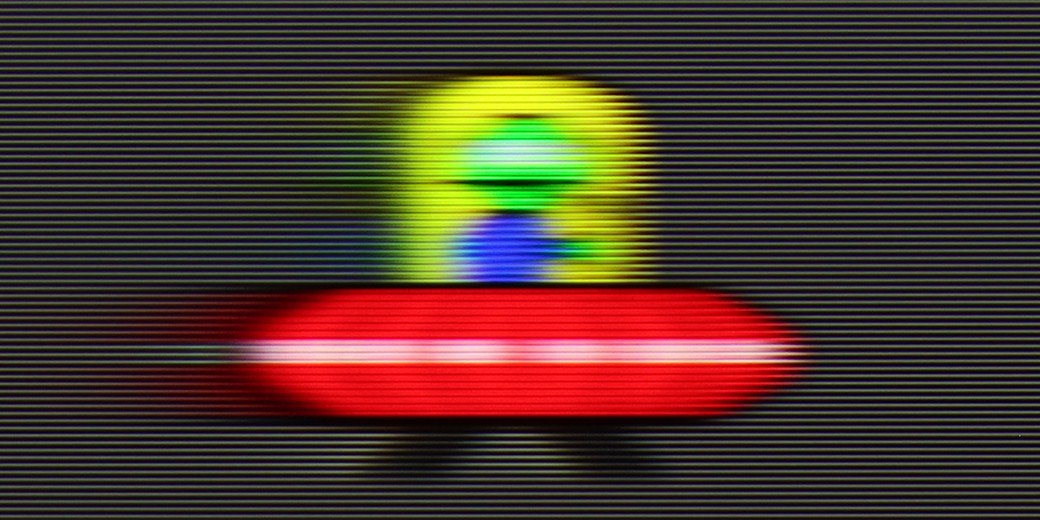
Blur (BFI function enabled):
Image flickers in this mode



Image flickers in this mode

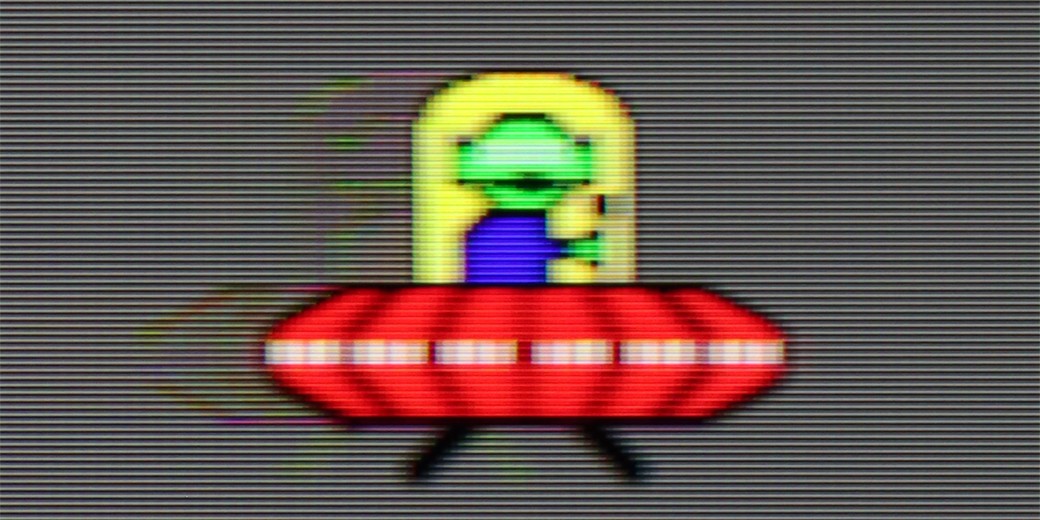

Smużenie ():
Smużenie (4K 144Hz):
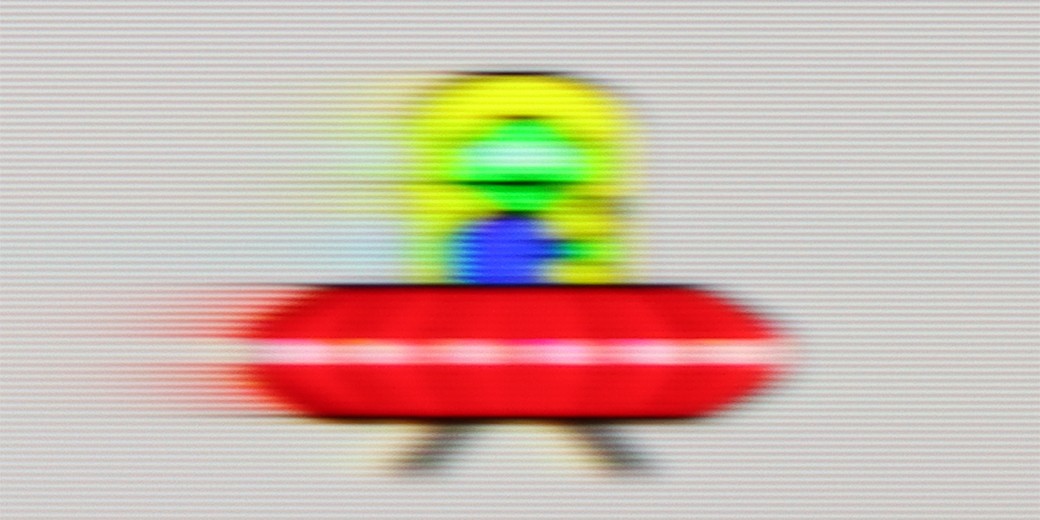
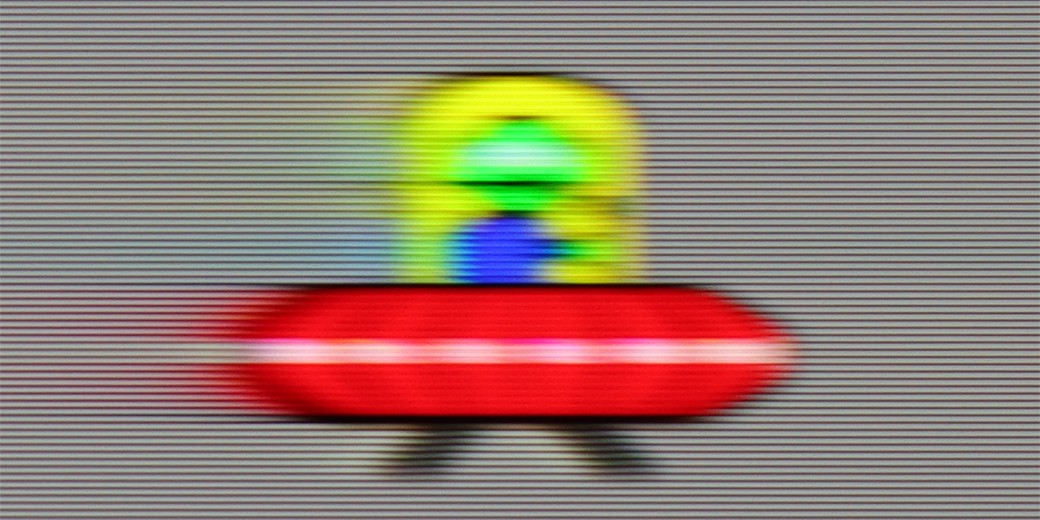
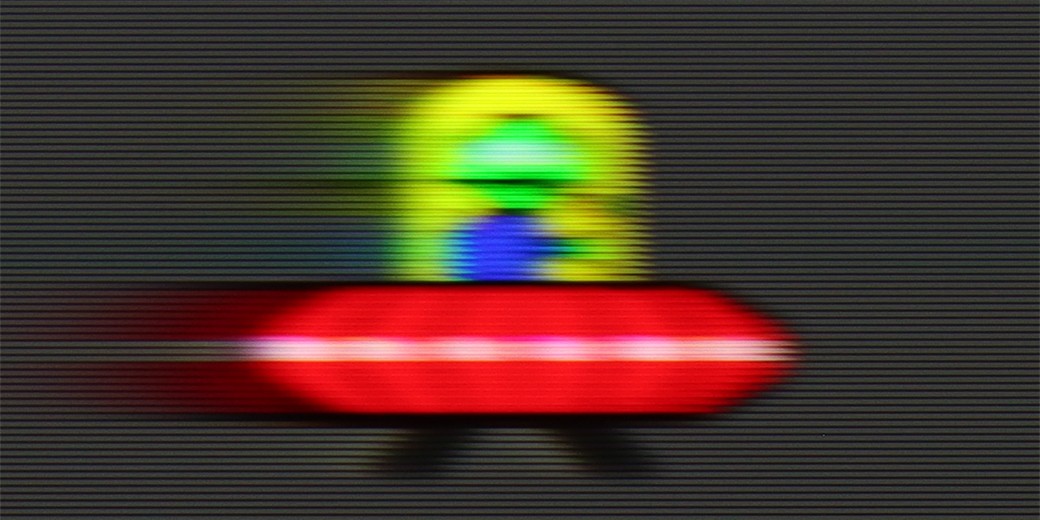
The Samsung Q80D television stands out very positively in terms of motion fluidity and motion blur reduction, primarily due to the applied 120Hz panel and above-average response time of the panel. Users have two options for adjusting fluidity: "Motion Smoothing," which allows for adjustment of smoothness on a 10-point scale, and "Blur Reduction," particularly effective at higher refresh rates, improving the sharpness of rapidly moving objects. In the UFO test, no motion blur is visible behind the moving object, and the image is not cloned forward, indicating a lack of overshoot effect.
The QN70F is a television with a refresh rate of 144 Hz, which in itself places it among the top when it comes to image fluidity. Whether we are watching dynamic sports broadcasts or playing on a console – the picture looks very good. There is no sense of stuttering, choppiness, or the typical "tearing" associated with weaker models during fast motion. Samsung also allows you to adjust the fluidity to your own preferences. In the picture clarity settings, we find options such as blur reduction and judder reduction – each of which we can adjust independently. This is especially useful when watching content with a lower frame rate and wanting to give it a smoother, more theatrical character – or conversely, to maintain the natural cinematic "feel" of 24 frames.
Console compatibility and gaming features
9.5/10
8.2/10
- ALLM
- VRR
- VRR range48 - 120Hz48 - 144Hz
- Dolby Vision Game Mode
- Correct implementation of HGIG
- 1080p@120Hz
- 1440p@120Hz
- 4K@120Hz
- Game bar

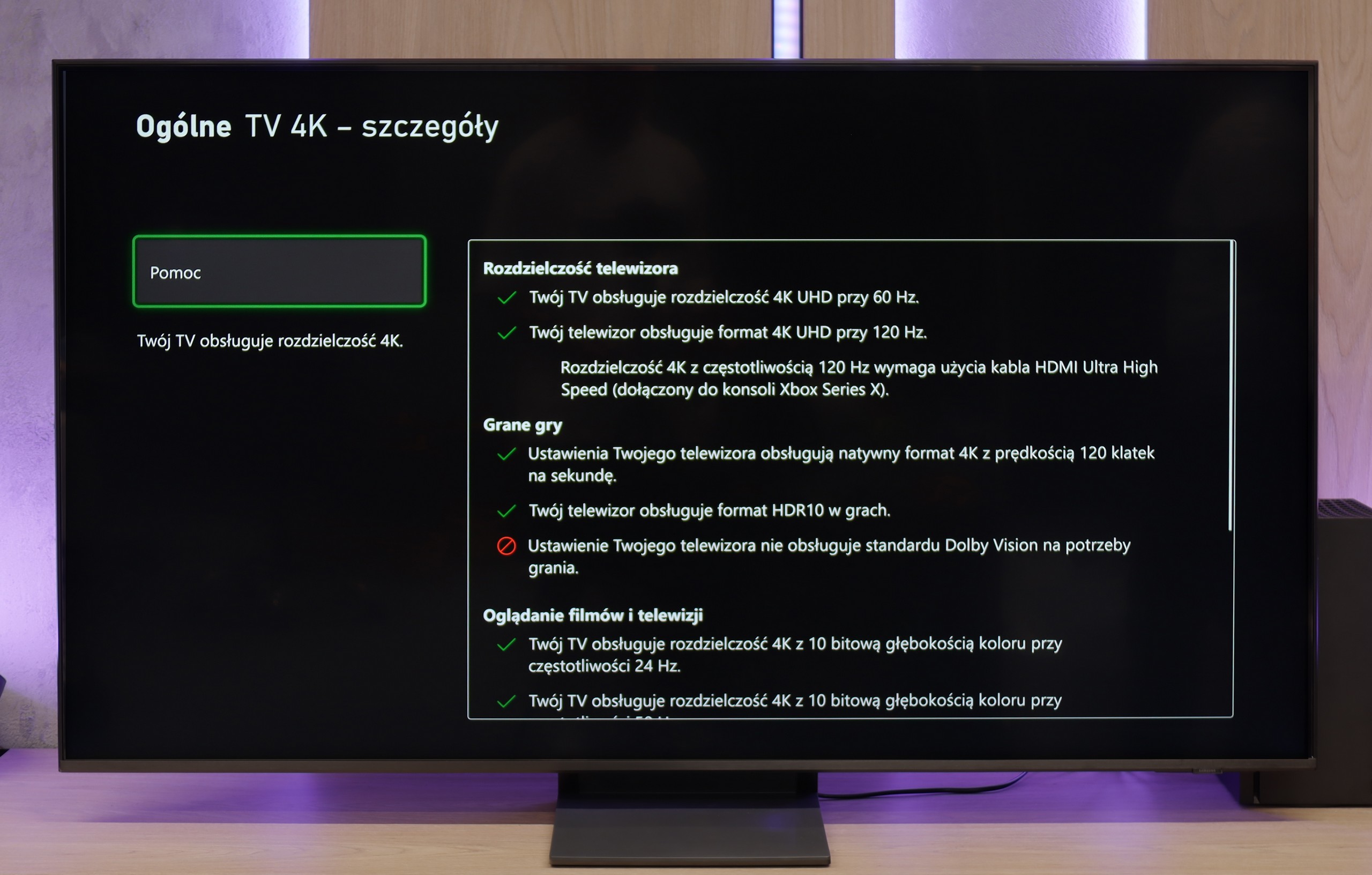

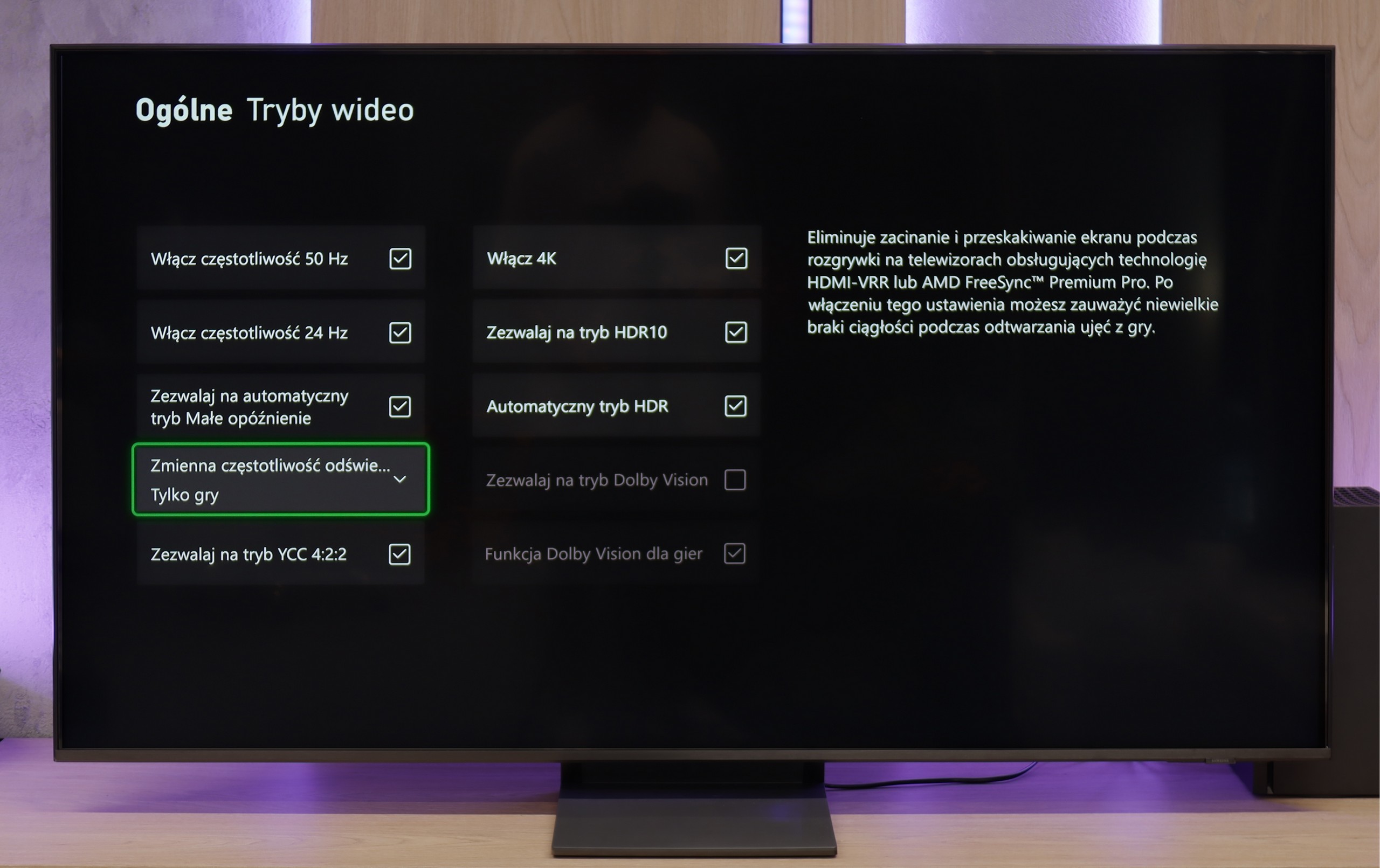

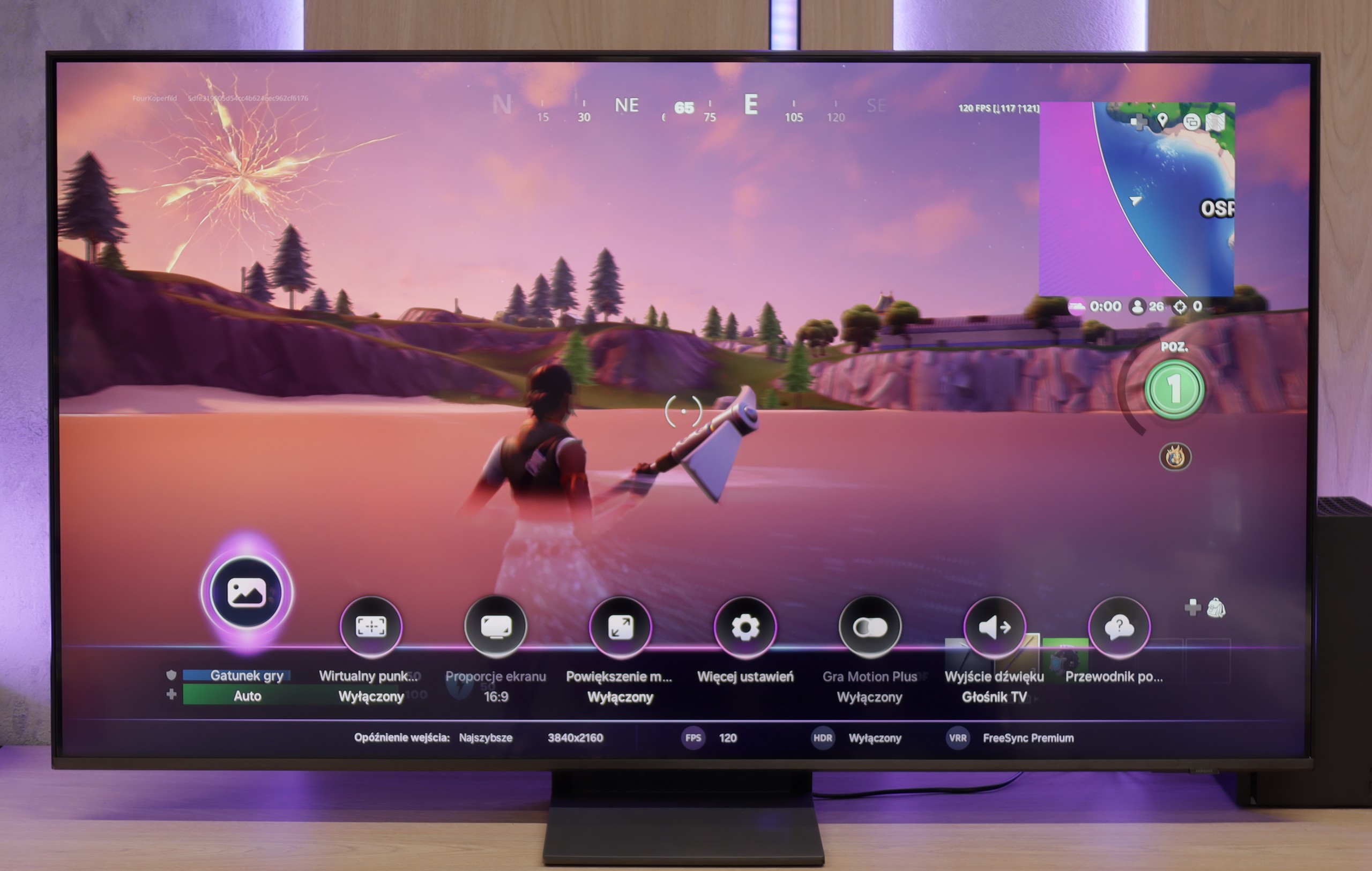

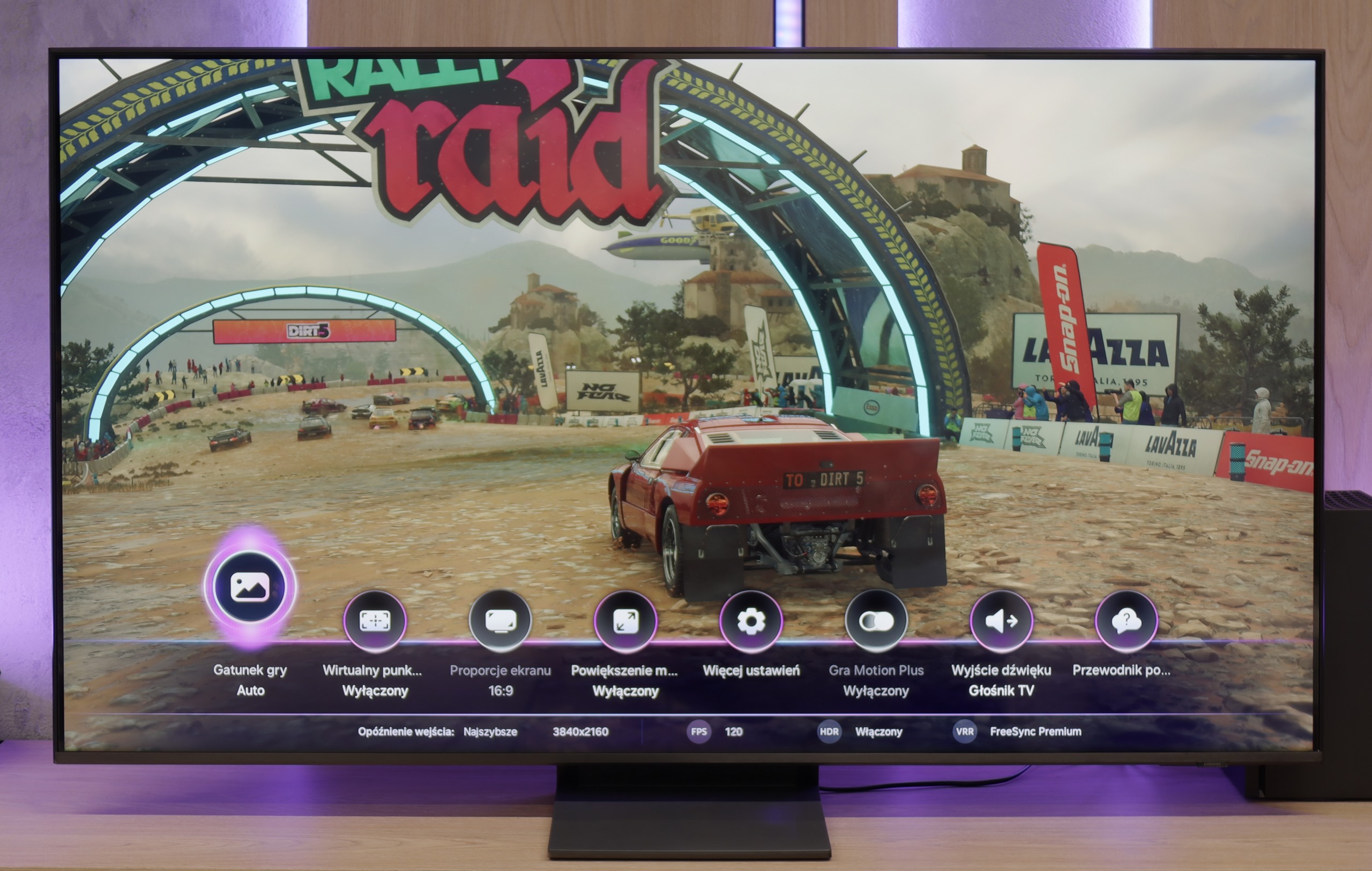
The Samsung Q80D television is a true gem for gamers. It is equipped with four HDMI 2.1 ports, which is a rarity, especially in this price range. This allows users to enjoy features such as ALLM (Auto Low Latency Mode), VRR (Variable Refresh Rate), and 120Hz in 4K resolution. These features ensure smoothness and responsiveness of the image, which is a key aspect during dynamic gameplay. The television also supports HGIG (HDR Gaming Interest Group), enabling optimal display of HDR content in games. Additionally, it is equipped with a Game Bar that allows quick access to gaming settings. Users of Nvidia graphics cards will also be pleased thanks to the implementation of G-Sync. This feature eliminates stuttering and screen tearing. The only downside is the lack of support for Dolby Vision mode, which may be disappointing for users looking for this HDR format. It is also worth mentioning that since 2022, thanks to a partnership with Microsoft, Samsung televisions offer the Xbox Game Pass application, allowing for cloud gaming. This is an additional advantage for gamers who want to access a wide library of games without the need for a console.
The Samsung QN70F is truly a solid choice for gamers. Here, we find as many as four HDMI 2.1 ports with full bandwidth of 48 Gbps, meaning full support for gaming in 4K at a refresh rate of 144 Hz. Additionally, it includes all the essential features we expect today: automatic game mode (ALLM), variable refresh rate (VRR), and a very well-designed, intuitive Game Bar showing information about mode, resolution, and frame rate.
Also noteworthy is the Game Motion Plus feature, which allows artificial frames to be added to games running at 60 fps or less. This works surprisingly well and in many titles – particularly those where consoles struggle to maintain a stable framerate – it improves the fluidity of gameplay without significant delay.
Unfortunately, there are some drawbacks. The lack of support for Dolby Vision mode is not surprising – it’s a standard with Samsung. However, the absence of the HGiG feature is much more disappointing. Worse still, it was removed with a software update, which may leave users who previously relied on it quite puzzled. Without HGiG, it is impossible to manually set the maximum HDR brightness from the console, resulting in some games appearing slightly washed out – especially if the television misinterprets the tonal range. Why Samsung, a brand that has set standards for gaming features for years, decided to take such a step is hard to say. At the time of writing this review, the tested television was running on software version 1110 – and frankly, if you care about full support for gamers, it’s better to hold off on updates for the time being.
Input lag
9.8/10
10/10
SDR
HDR
Dolby Vision
There isn't much to say here, the input lag at this level is simply remarkable. It's hard to achieve a better result that will satisfy gamers! The television performed excellently at every tested resolution and refresh rate, both in SDR and HDR.
QN70F does not disappoint in terms of response time either. For 120 Hz materials, the input lag hovers around 8 ms, which can be considered a very good result – especially in the context of online competition or dynamic action games. The screen responds to the movements of the controller almost instantaneously, with no noticeable delay. As a result, the gameplay is smooth and comfortable, even in more demanding titles. In this category, Samsung still maintains a high standard, and it is hard to find anything that could raise objections.
Compatibility with PC
7.6/10
8.2/10

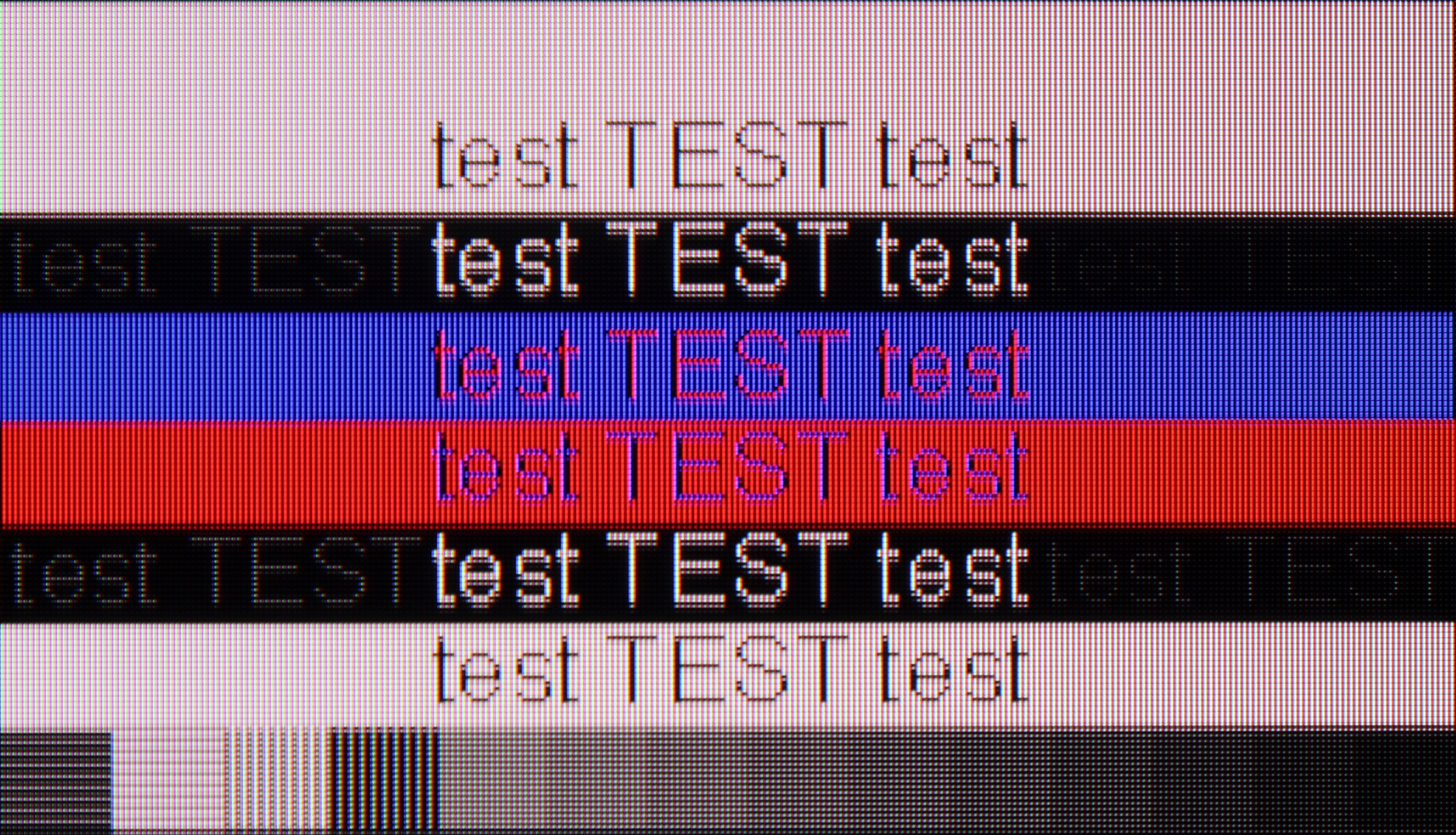
Samsung Q80D works well as a computer monitor. Thanks to support for 4:4:4 chroma (which only functions in "Game" mode), text on the screen is clear and legible, which is very important for those who want to work on such a television with text documents or spreadsheets. One of the biggest advantages of this model is its exceptionally low input lag in "PC" mode, which is just 9 ms. This is a reference-level result that ensures smoothness and responsiveness, which is crucial for both gamers and those involved in video editing. The only issue we can point out is that there is a certain problem with displaying fonts on dark backgrounds. When we zoom in on the tested font image, we notice that the horizontal lines are darker compared to the vertical ones. This means that the sub-pixels in the television do not fully illuminate in this case. This could be due to an oversight by the manufacturer regarding the optimisation of the algorithm responsible for displaying thin lines, which affects the quality of details in displaying text on dark backgrounds. Nevertheless, Samsung Q80D is a very good choice as a PC monitor.
Let's start with the best aspect of connecting the QN70F to a computer – gaming. A refresh rate of 144 Hz, support for G-Sync compatible VRR, and very low input lag create the perfect recipe for an almost ideal screen for PC gamers. In this role, the QN70F truly does not disappoint – games look smooth, responsiveness is at a very high level, and everything runs stably.
However, the performance regarding text work is somewhat lacking. At a resolution of 4K and a refresh rate of 144 Hz, there is a noticeable blurriness in the font contours – text may appear slightly smeared, with a slight “layering” of the contours. This is not a problem that undermines the usability of the QN70F as a monitor, but individuals planning to do office work or text editing on this screen should keep this in mind.
Viewing angles
3/10
3.1/10
Samsung Q80D, equipped with a VA panel, unfortunately does not perform well in terms of viewing angles. When we watch the screen at a 45-degree angle, there is a noticeable loss of brightness. The image becomes less sharp, which can be problematic if we plan to watch television from different spots in the room. However, the VA panel has its advantages. When looking directly at the screen, black levels are deep and well-saturated. Furthermore, even at an angle, dark colours maintain their depth, which is a rarity for this type of panel.
As for the VA panel, the viewing angles on the QN70F are typical – meaning rather average. The image quickly loses contrast and saturation when we start looking at the screen from a greater angle. Compared to IPS panels, it performs significantly worse. On the other hand – thanks to this panel, we gain better blacks and higher contrast when viewing straight on, which will be more important for many users than wide visibility from the sides.
TV efficiency during daytime
6/10
6.3/10

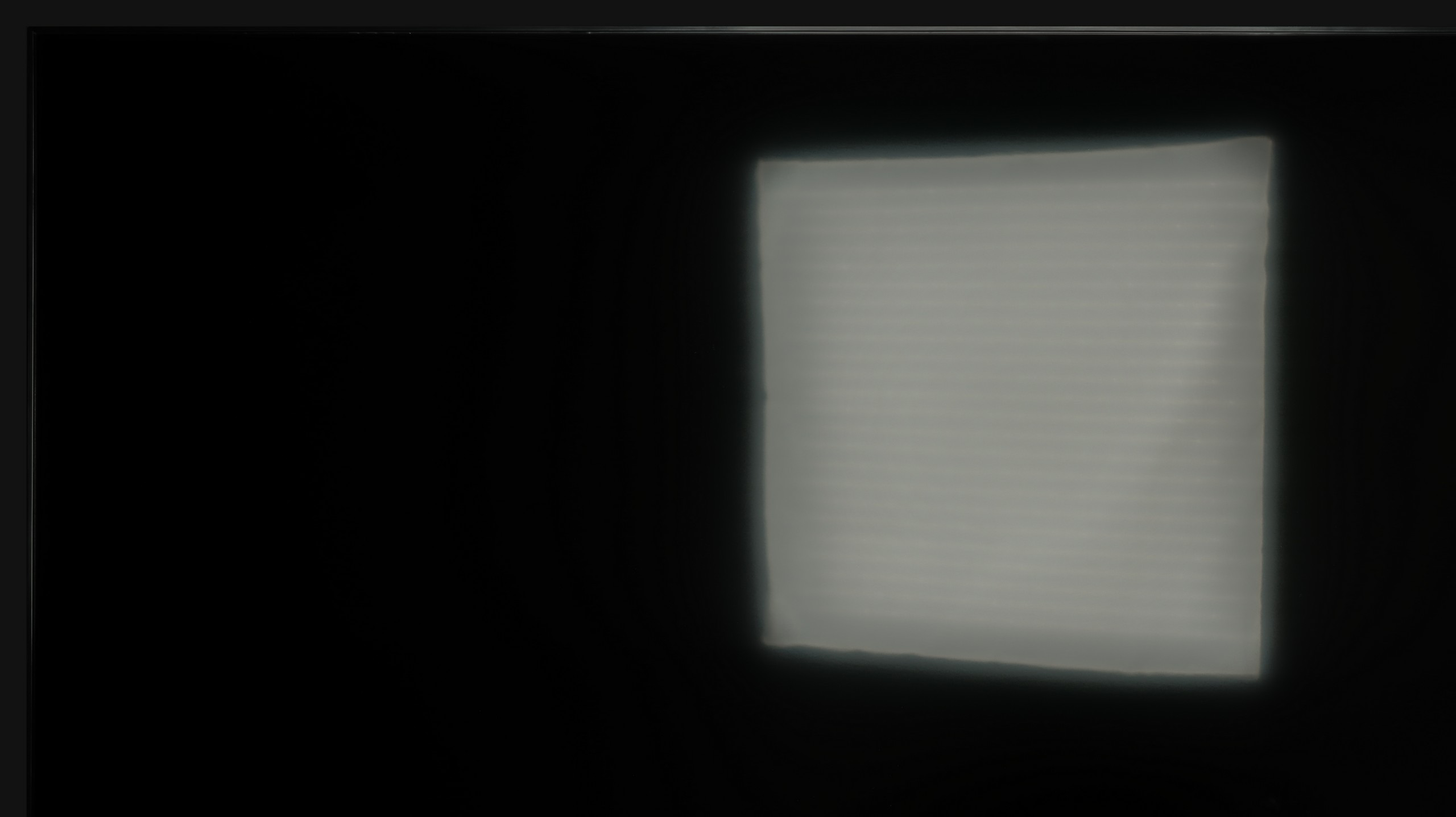


Matrix brightness
Average luminance SDR
Samsung Neo QLED QN70F / QN74F / QN77F: 492 cd/m2
Samsung QLED Q80D: 550 cd/m2
The Samsung Q80D television stands out with very good brightness, averaging 550 nits, which is an impressive result, especially since it maintains this brightness across the entire screen surface. This makes the image clear and well-visible even in bright rooms, which is a big plus when watching television during the day. However, despite the satin coating of the panel, the television struggles somewhat with reducing reflections. In bright lighting conditions, unwanted glares can appear, which may disrupt viewing comfort. This is particularly noticeable when there are light sources in the room directly falling on the screen.
The QN70F handles a bright living room without any issues. The screen has a satin finish that effectively suppresses reflections, so there's no need to immediately draw the curtains to see anything. Even when there's plenty of light in the room – for example, with a window to the side – the picture still looks clear and vibrant. The brightness is also at a solid level. In SDR mode, the television averages around 500 nits, which is more than sufficient for daytime viewing. While it may not reach the levels of top models, in practice – for everyday television watching, sports, or YouTube – it performs very well.
Details about the matrix
Subpixel Structure:


Panel uniformity:

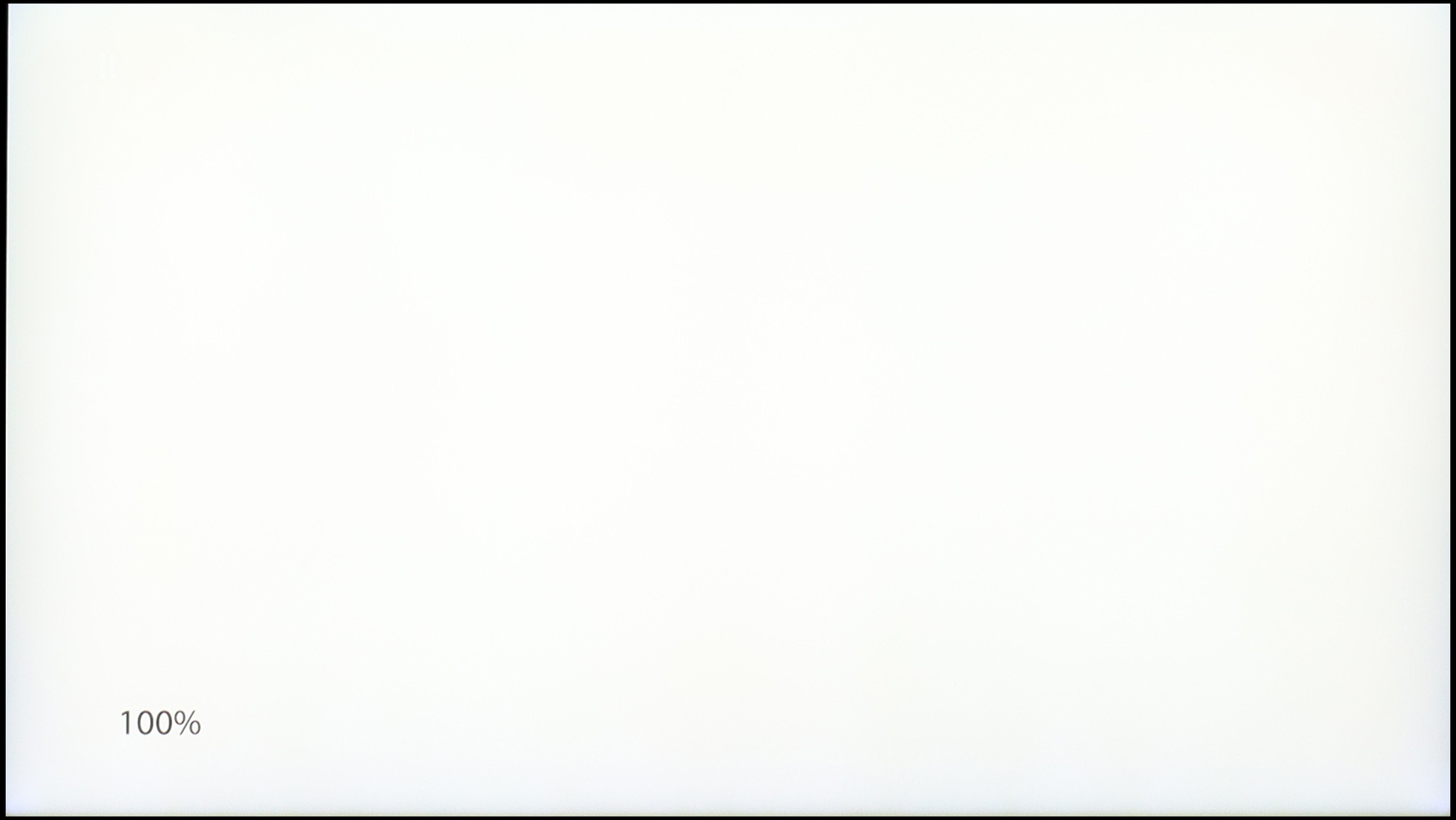
Samsung QLED Q80D
Samsung Neo QLED QN70F / QN74F / QN77F
TV features
7.7/10
7.2/10
- HDMI inputs0 x HDMI 2.0, 4 x HDMI 2.1 48Gbps0 x HDMI 2.0, 4 x HDMI 2.1 48Gbps
- OutputsToslink (Optical audio), eARC (HDMI), ARC (HDMI)Toslink (Optical audio), eARC (HDMI), ARC (HDMI)
- Network InterfacesWi-Fi 2.4GHz, Wi-Fi 5GHz, Ethernet (LAN) 100MbpsWi-Fi 2.4GHz, Wi-Fi 5GHz, Ethernet (LAN) 100Mbps
- TV receptionDVB-T, DVB-T2, DVB-S, DVB-S2, DVB-CDVB-T, DVB-T2, DVB-S, DVB-S2, DVB-C
Classic features:
- Recording to USB (terrestrial TV)
- Recording programming
- Picture in Picture (PiP)
- RF remote control (no need to aim at the screen)
- Backlit remote control
- Teletext
- Audio only mode
- Possibility to connect Bluetooth headphones to the TV
- Possibility to simultaneously use Bluetooth headphones and the TV speaker
Smart features:
- AirPlay
- Screen mirroring (Windows Miracast)
- Wyszukiwanie głosowe
- Voice search in native language
- Ability to connect a keyboard and mouse



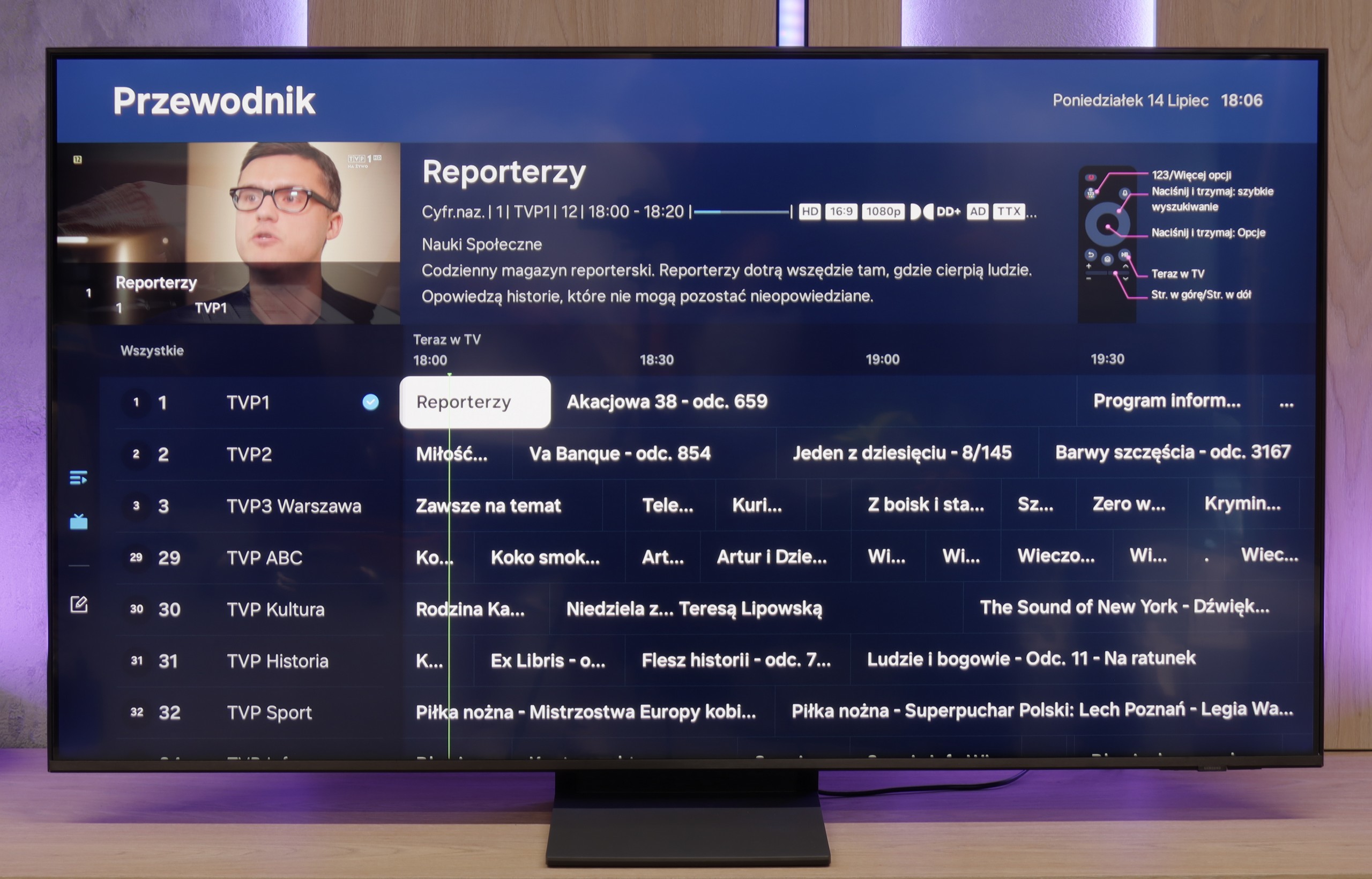
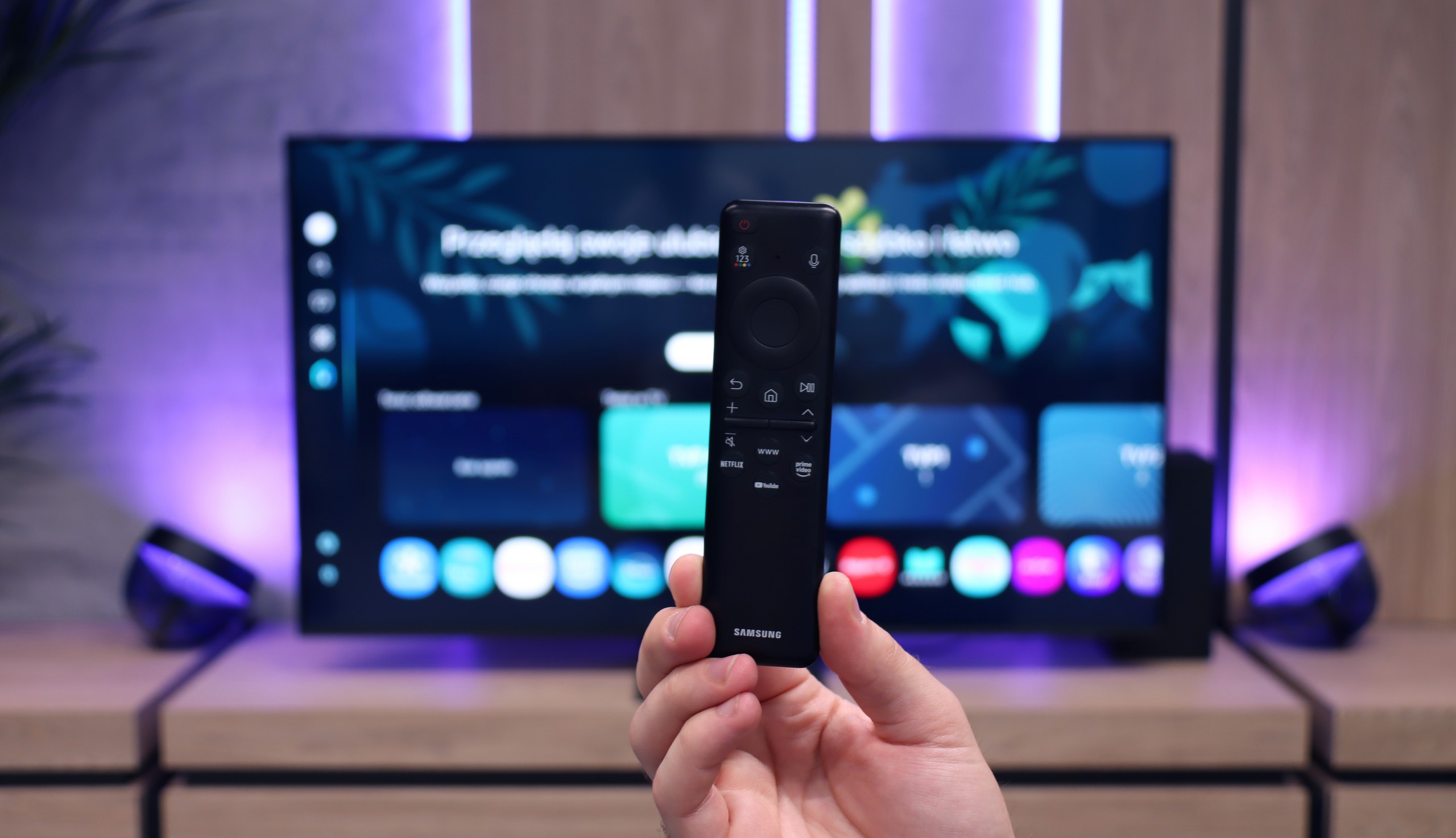
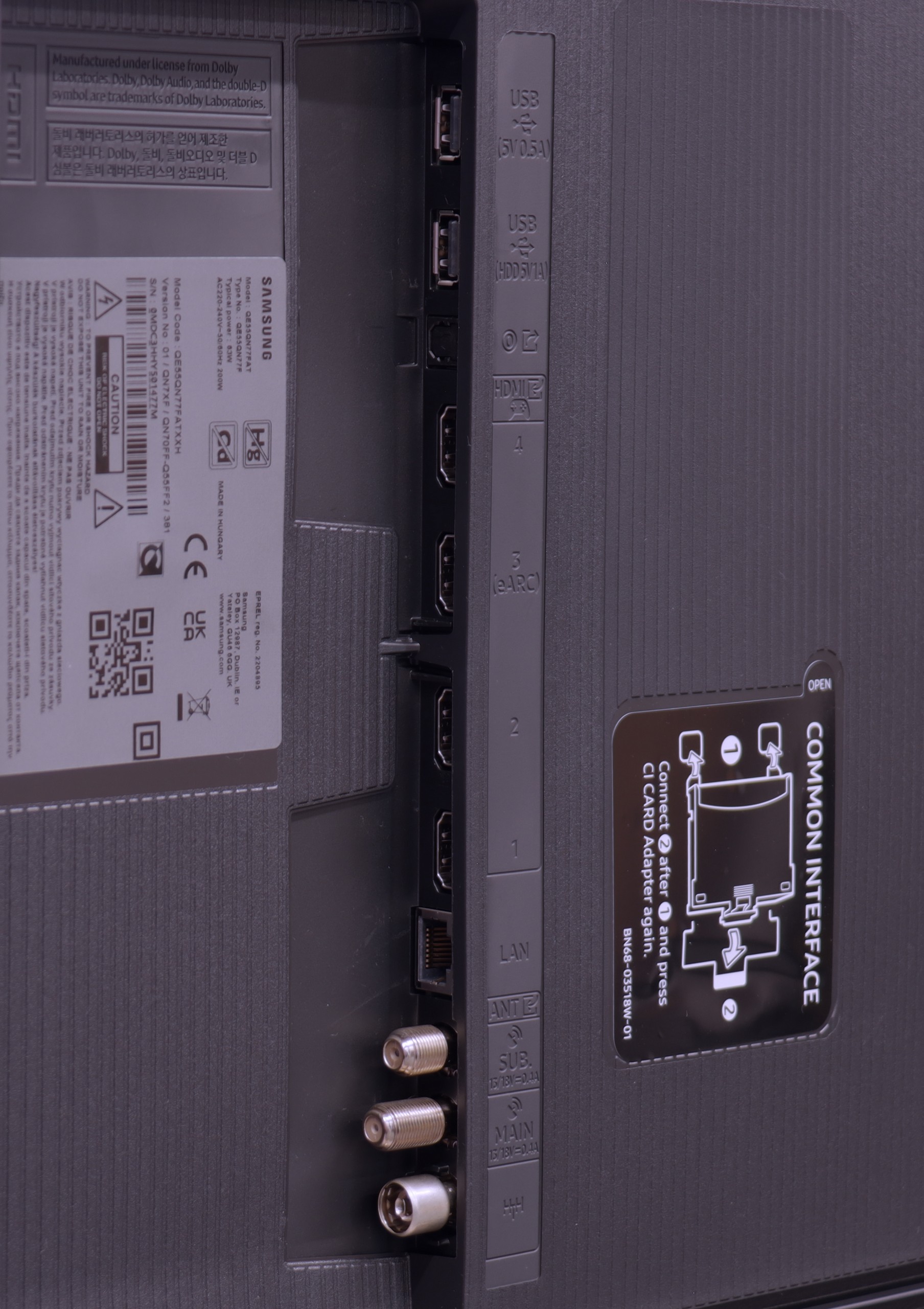
The Samsung Q80D television offers a range of features that significantly enhance user comfort. The Tizen system is an advanced platform that provides users with an intuitive and smooth experience. Thanks to its user-friendly interface, navigation through apps and settings is quick and easy. Tizen supports a rich set of applications, including popular streaming services, allowing access to a wide variety of entertainment content without the need for additional devices, with the novelty for 2024 being support for the Polish language. It is also worth mentioning the solar remote, which is not only eco-friendly but also convenient for everyday use. The solar cell remote can easily control other devices such as home cinemas, decoders (e.g. Canal+), or game consoles, which poses quite a challenge for other manufacturers. Returning to the console, Samsung Q80D offers several features that may appeal to gamers. Above all, the television supports VRR (Variable Refresh Rate) technology, which allows for smoother game displays, eliminating issues like tearing and stuttering. Additionally, due to its low input lag, gaming reactions are quick and precise. The Samsung Q80D is also equipped with a Game Bar function, which allows quick access to key gaming settings without the need to exit the game. From this level, we can check and adjust parameters such as VRR, input lag, frames per second (FPS), as well as screen ratios or sound settings. This enables gamers to continuously optimise their experiences by adjusting settings to the current gameplay needs. The television supports AirPlay, allowing for easy content streaming from Apple devices, and enables connection to various Bluetooth devices, such as mice or headphones, increasing its versatility. The only downside that can be considered is the lack of support for USB recording and the fact that the Q80D unfortunately does not support the DTS audio format. This means that if we have content encoded in this format, the device will not be able to correctly playback the audio track. This could pose a problem for those using Blu-ray discs or multimedia files that often use DTS to provide high-quality surround sound. To achieve full audio experiences, it may be necessary to use an external player or soundbar that supports this format.
Television Features
The QN70F doesn't forget classic features that still matter to many users. On board, we find, among other things, picture-in-picture (PiP) mode, enabled by the presence of two tuners, teletext, and a "Sound Only" mode – perfect if we want to use the television like a radio. We can easily pair it with headphones or a soundbar via Bluetooth, and the remote control – despite the absence of a numeric keypad – works reliably, allowing us to operate other devices and additionally does not require us to aim at the screen. However, it should be noted that like all new Samsung models, we will not find USB recording functionality here. This is a system limitation that the brand clearly adheres to consistently.
Smart TV QN70F – Tizen
The Tizen system, developed by Samsung for years, is one of the most refined Smart TV interfaces. It is fast, intuitive, and feature-rich. The QN70F supports voice search (also in Polish), wireless screen mirroring from a phone (both via AirPlay and Miracast), as well as integration with watches and other devices in the Samsung ecosystem. All of this is connected by the SmartThings app, which allows you to control hardware, automate tasks, and connect devices in one network. (Not only Samsung brand devices). However, it is not perfect. Tizen is a closed system, so the selection of apps can be somewhat limited – especially in comparison to Google TV. All the major streaming services are in place, but if you use less popular services, it's worth checking before purchasing if they are available in the Samsung store.
Playing files from USB
9.1/10
8.4/10
Supported photo formats:
Maximum photo resolution:

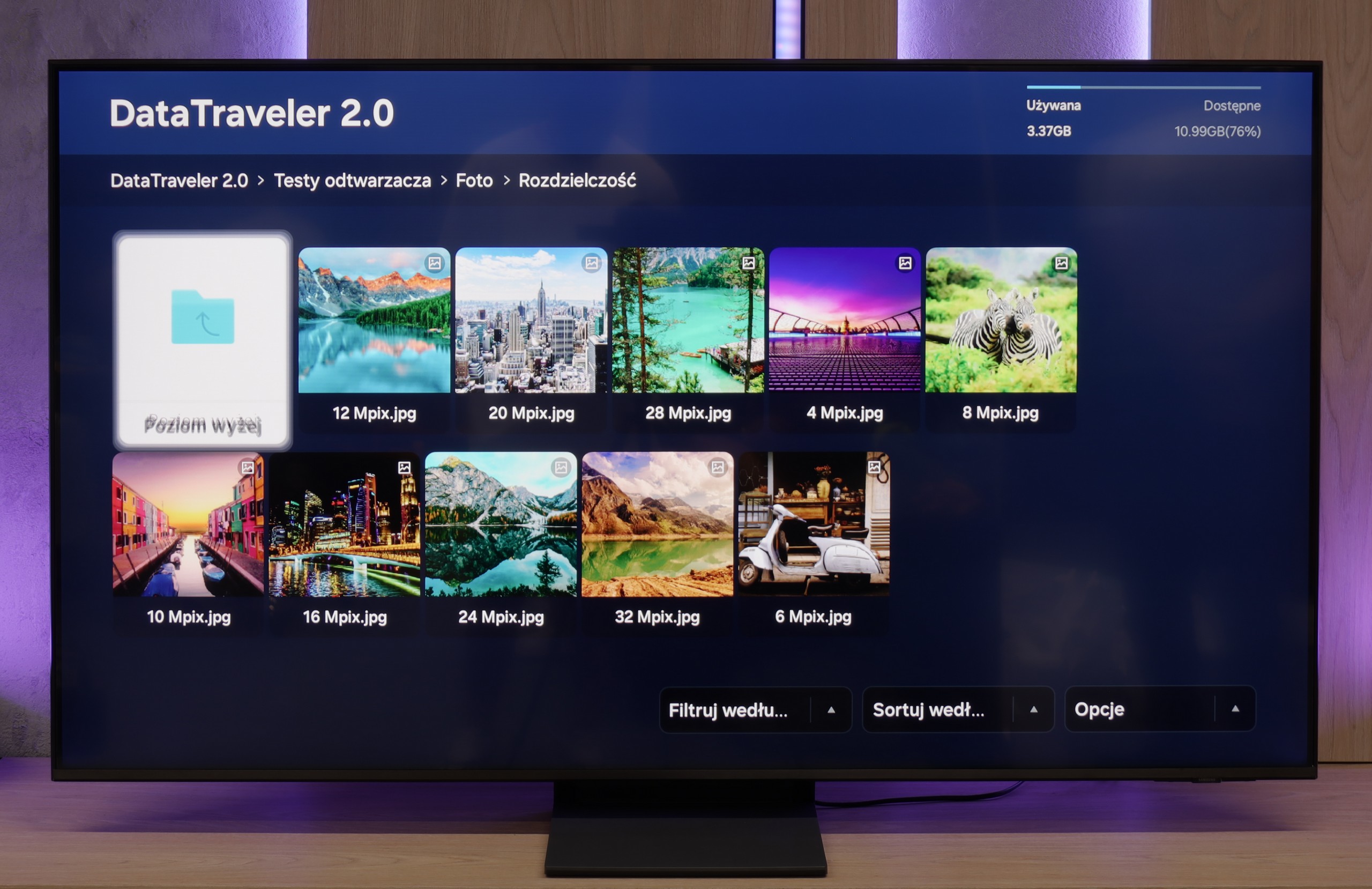
The built-in player in the Samsung Q80D television is definitely one of its strong points. It handles almost all video and audio files we used in our tests exceptionally well. The only exceptions are the Dolby Vision format, which is not surprising, and less popular codecs. Additionally, it is worth noting the support for Polish characters and the ability to customise font colours. On the downside, the television performs somewhat worse with photo formats, as it only supports JPEG from the popular options, lacking support for formats like PNG or Apple HEIC.
Samsung QN70F performs well with media playback – it easily runs photos, music, and videos in the most commonly used formats. During tests, it effortlessly opened JPG files, MP4, and subtitles in TXT format, so for most people, this will simply be sufficient. However, there were instances where a few files – despite having the correct extensions – would not play. It may be an issue with a specific version of the system, and the problem might disappear after future updates.
Apps
8.7/10
8.7/10














































Sound
6.6/10
6.4/10
- Subjective sound quality:6.6/106.4/10
- Dolby Digital Plus 7.1:
- Dolby True HD 7.1:
- Dolby Atmos in Dolby Digital Plus (JOC):
- Dolby Atmos in Dolby True HD:
- DTS:X in DTS-HD MA:
- DTS-HD Master Audio:
The Samsung Q80D television is equipped with a decent audio system boasting 40W power in a 2.2 configuration, providing quite good sound experiences. This system supports all popular Dolby codecs, allowing for the use of advanced audio formats while watching films or playing games. However, it is worth noting one drawback: the television does not support DTS functionality. Nonetheless, this lack can be circumvented by connecting an external audio system, which can significantly enhance sound quality and provide a more immersive audio experience. Additionally, Samsung offers a wide portfolio of soundbars that can be integrated with the television, as well as the Q-Symphony system, which allows for the synchronisation of sound between the television and the soundbar.
The Samsung QN70F performs quite mediocrely in terms of sound, which shouldn't come as a surprise considering the exceptionally slim design of the television. The built-in speakers will manage perfectly well during everyday viewing of news or simpler content, but it's hard to talk about any depth or spaciousness of sound here. It's simply a compromise one has to accept when choosing an elegant and thin design over a bulkier casing with a better audio system.


